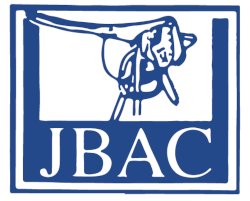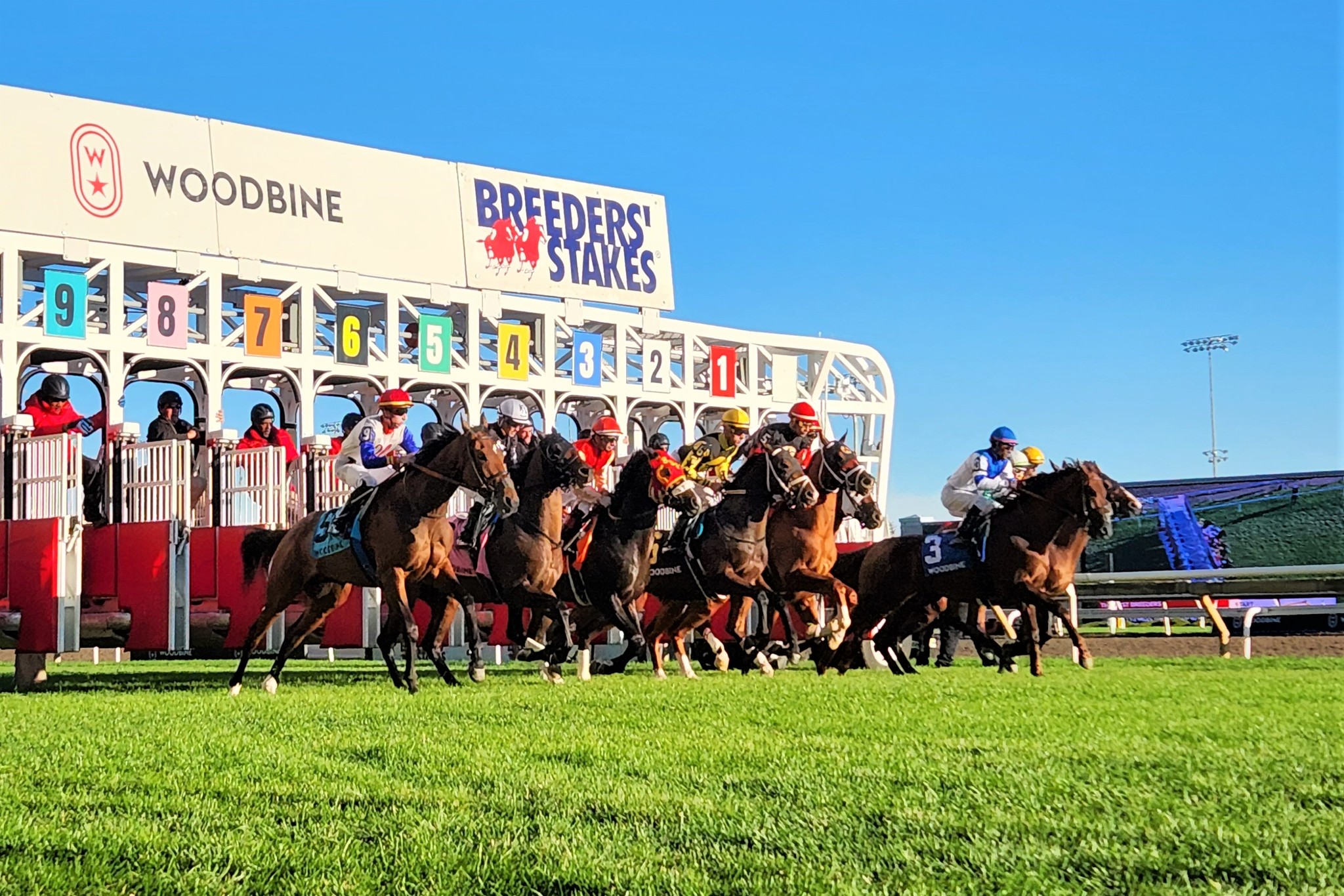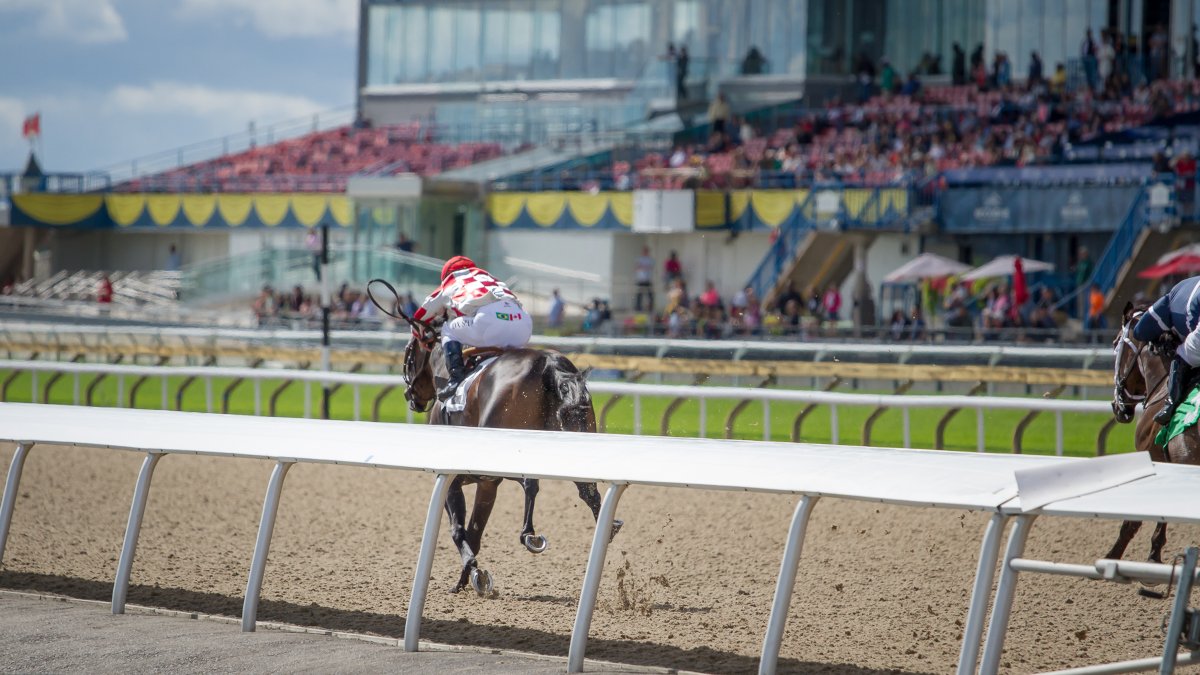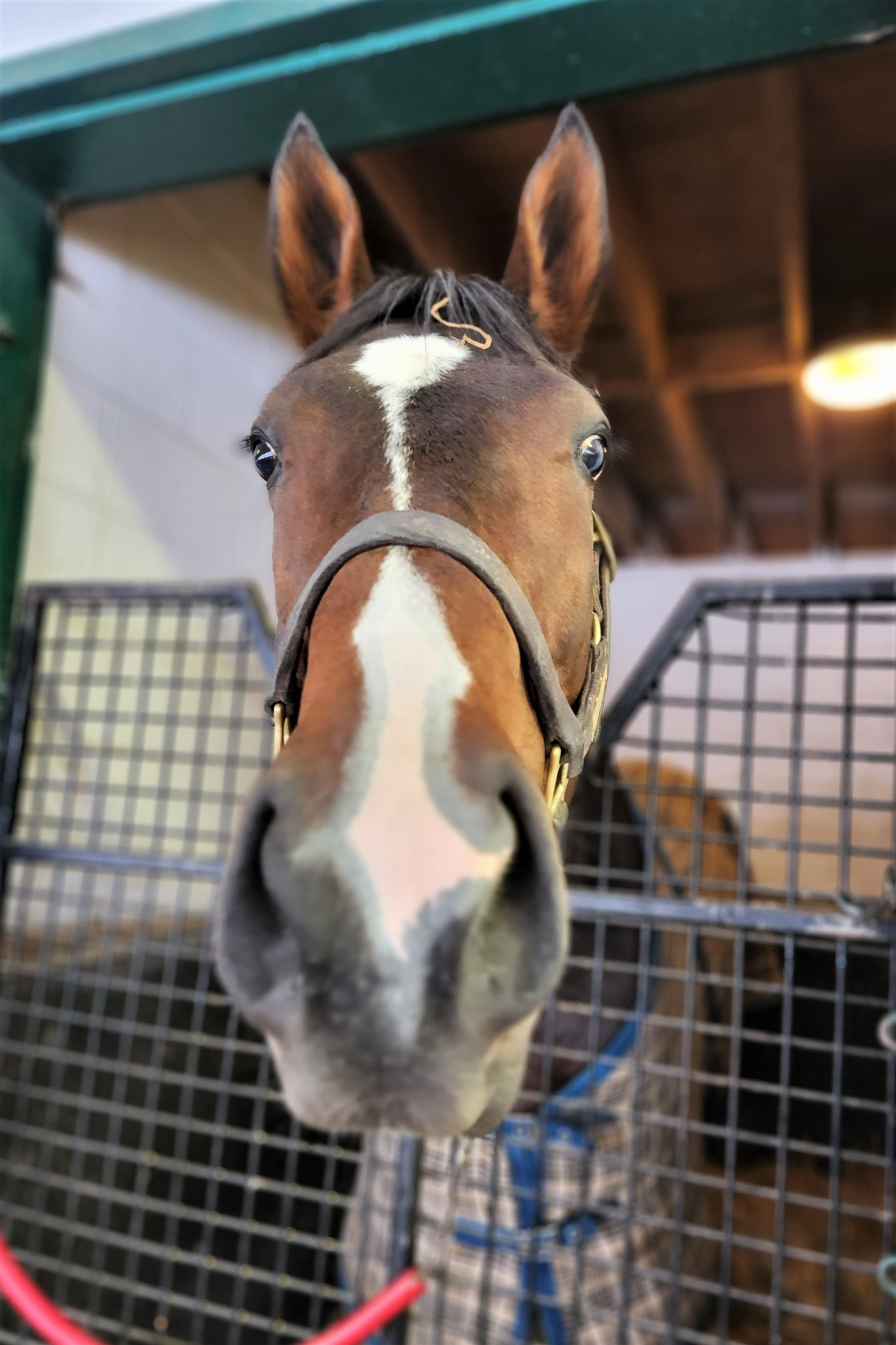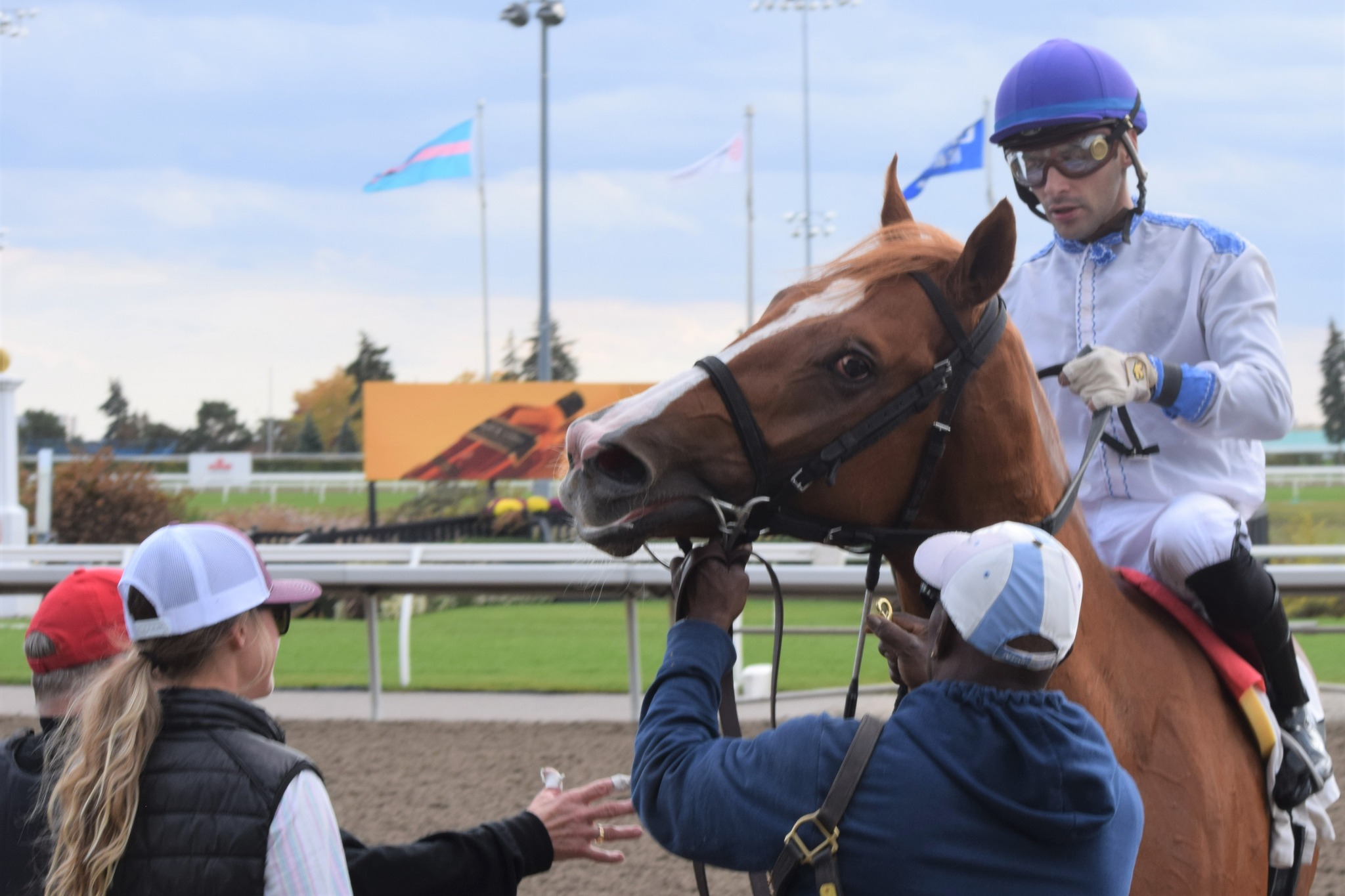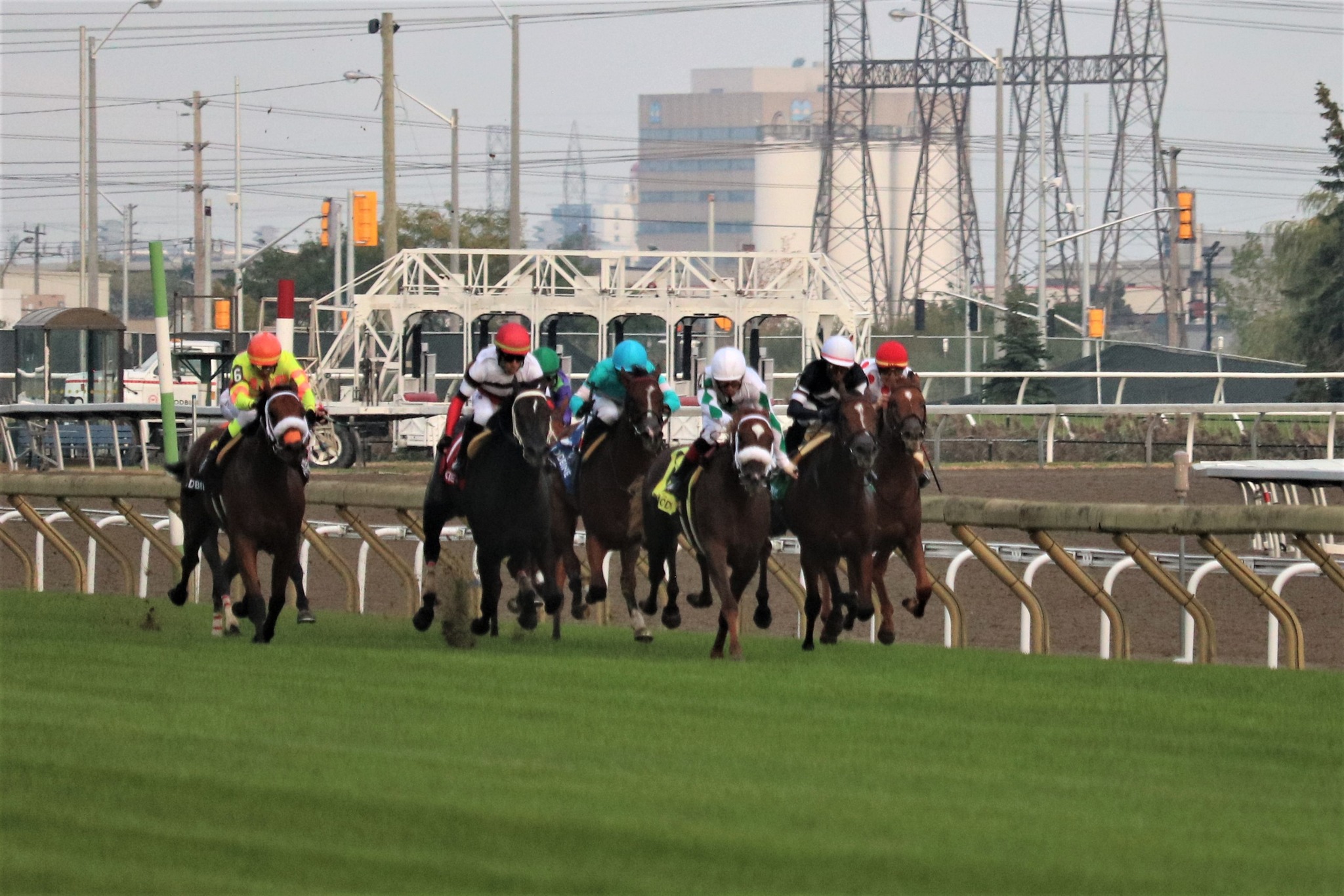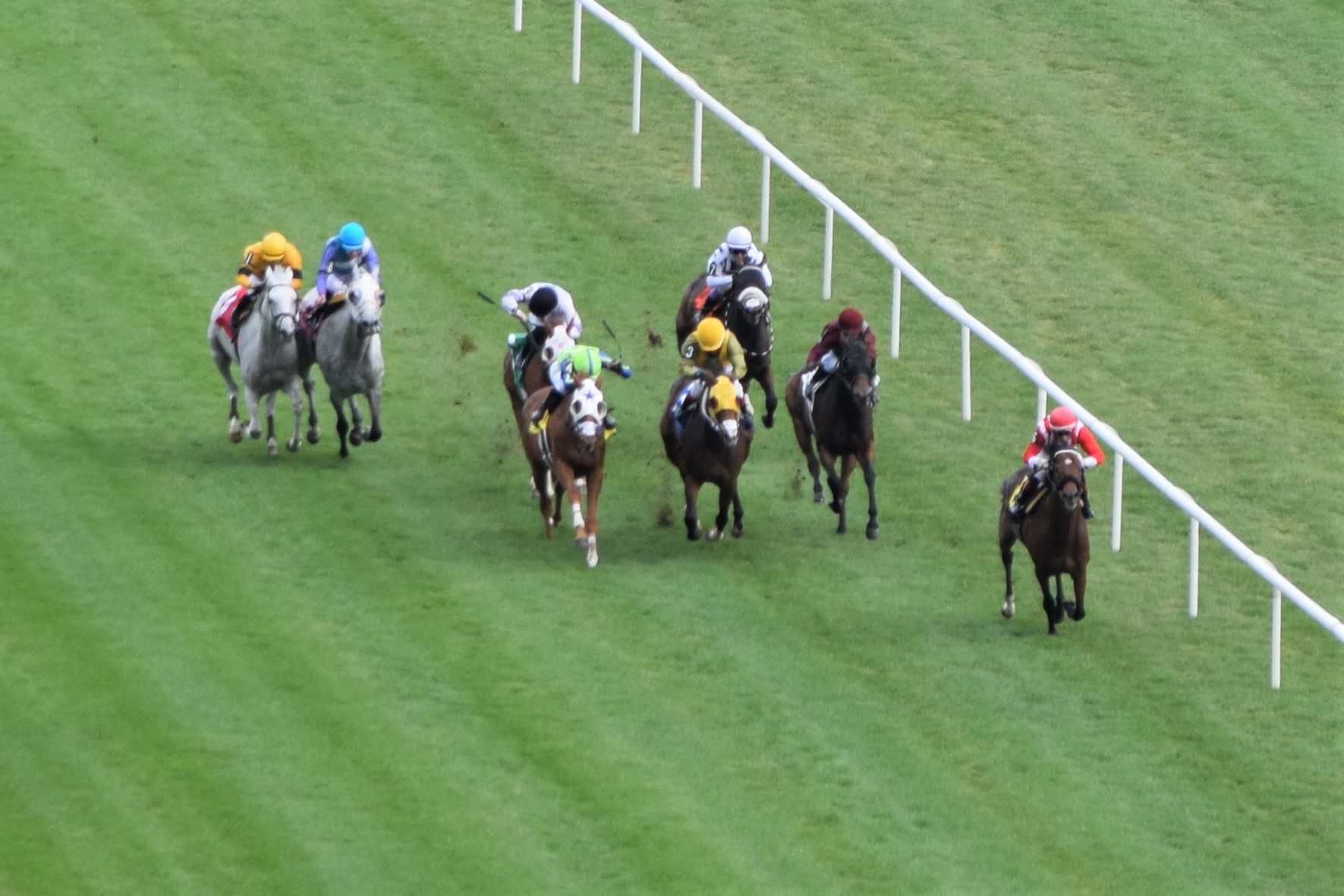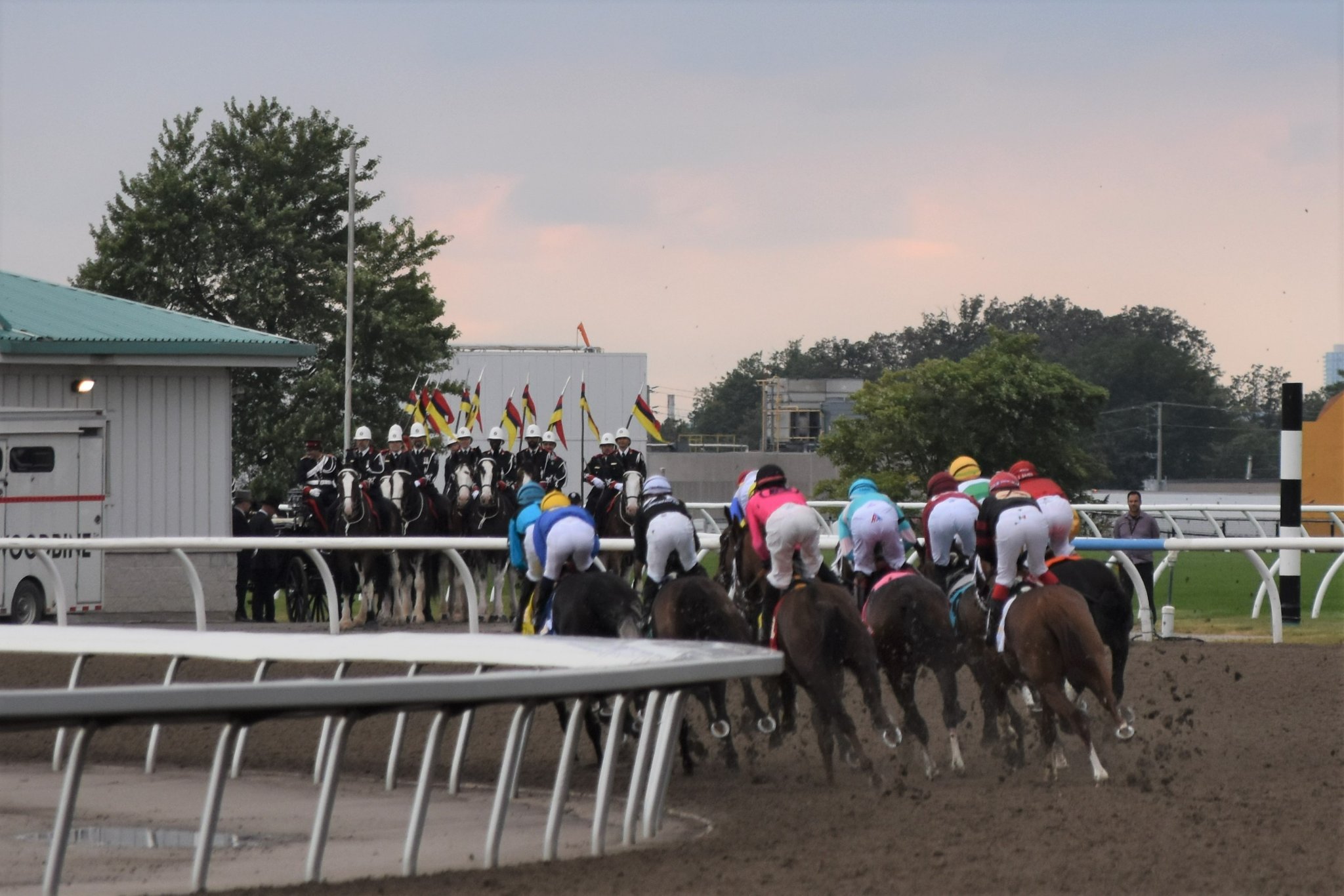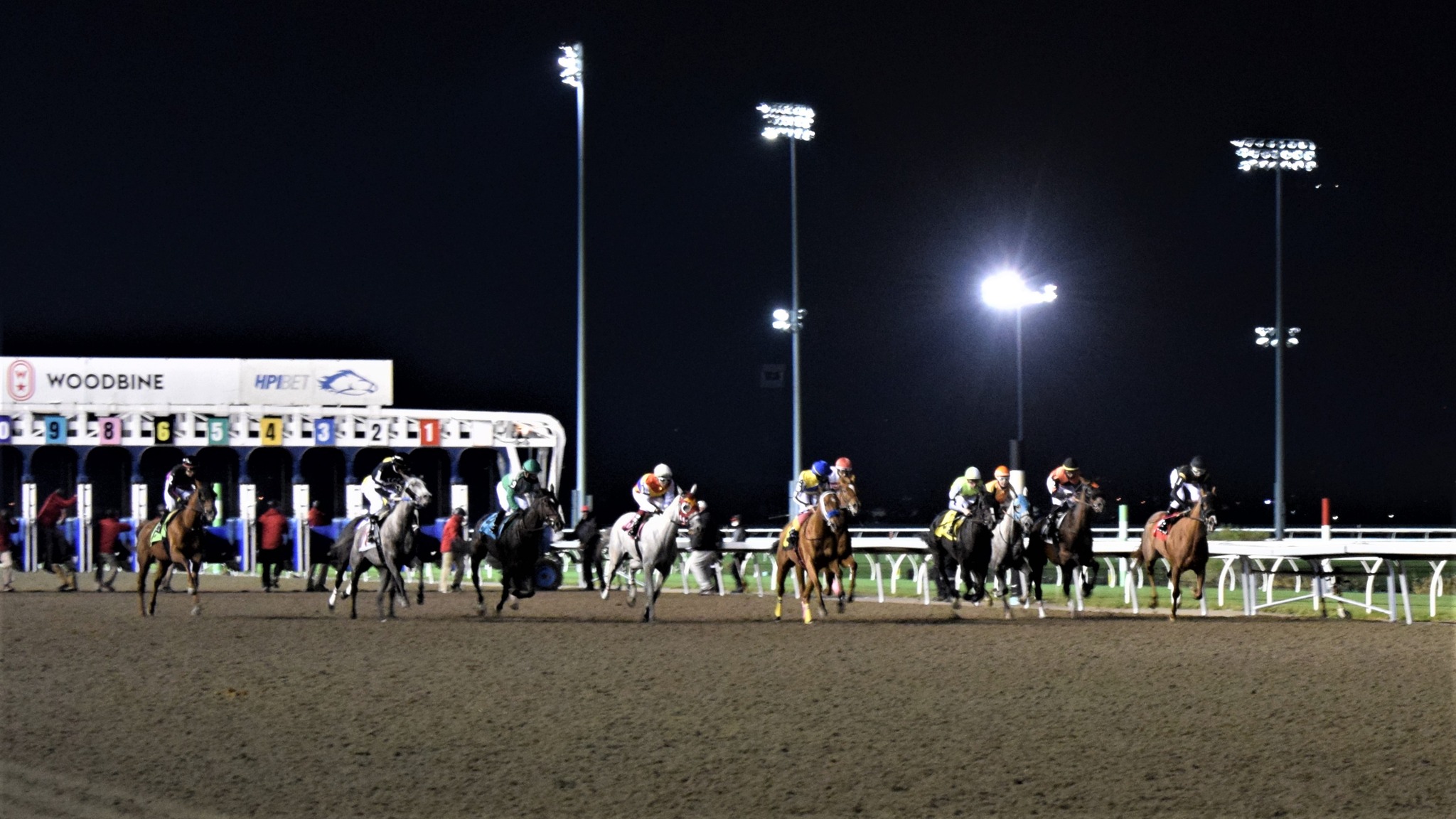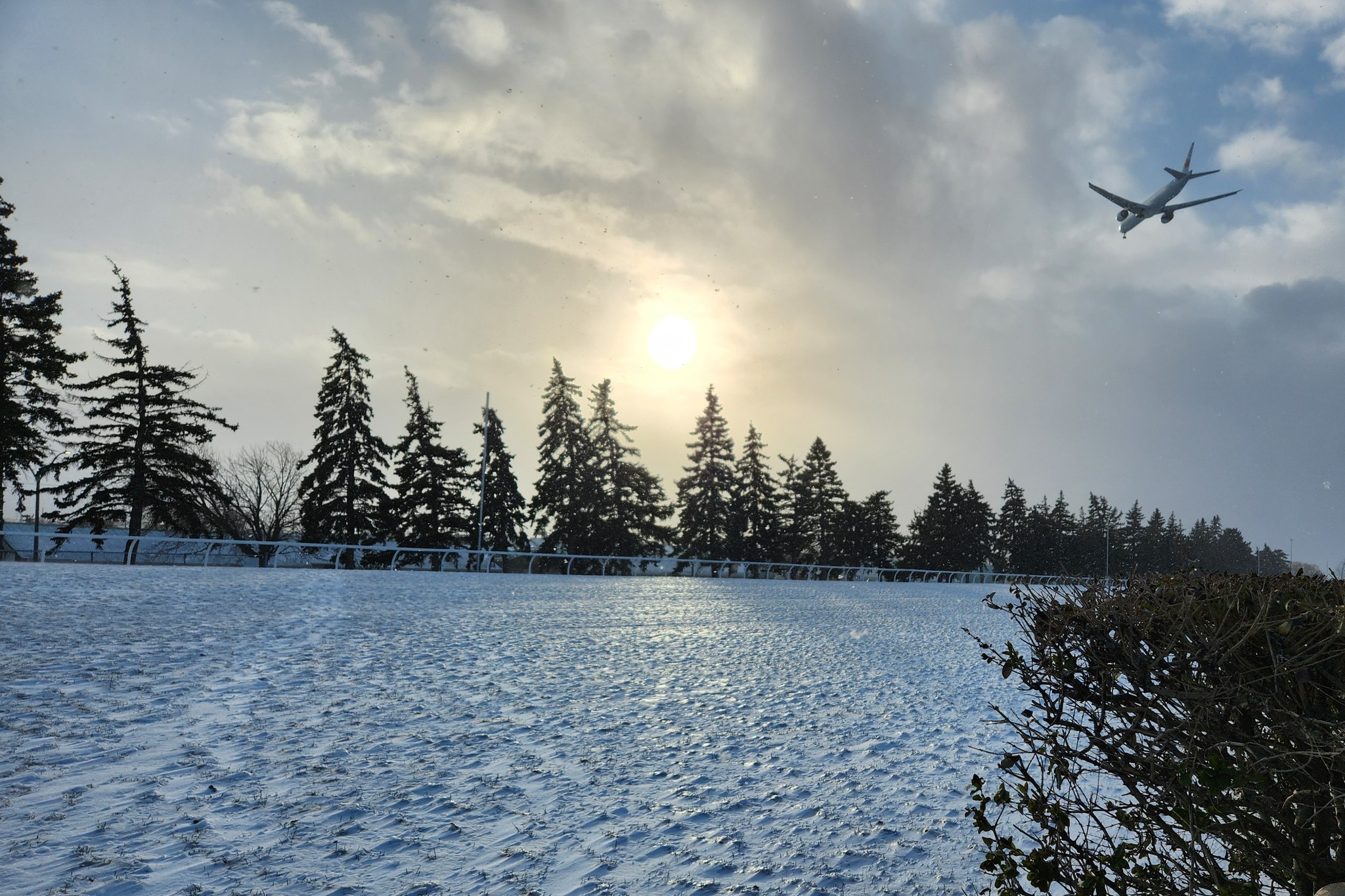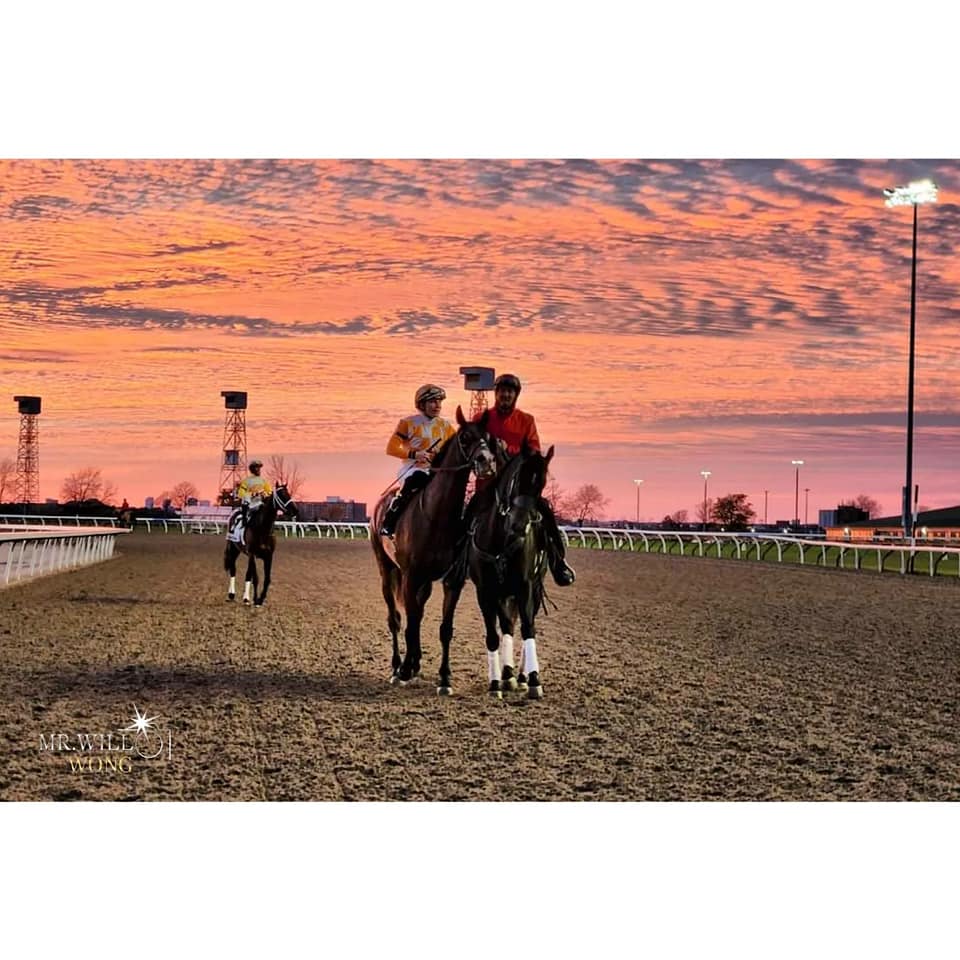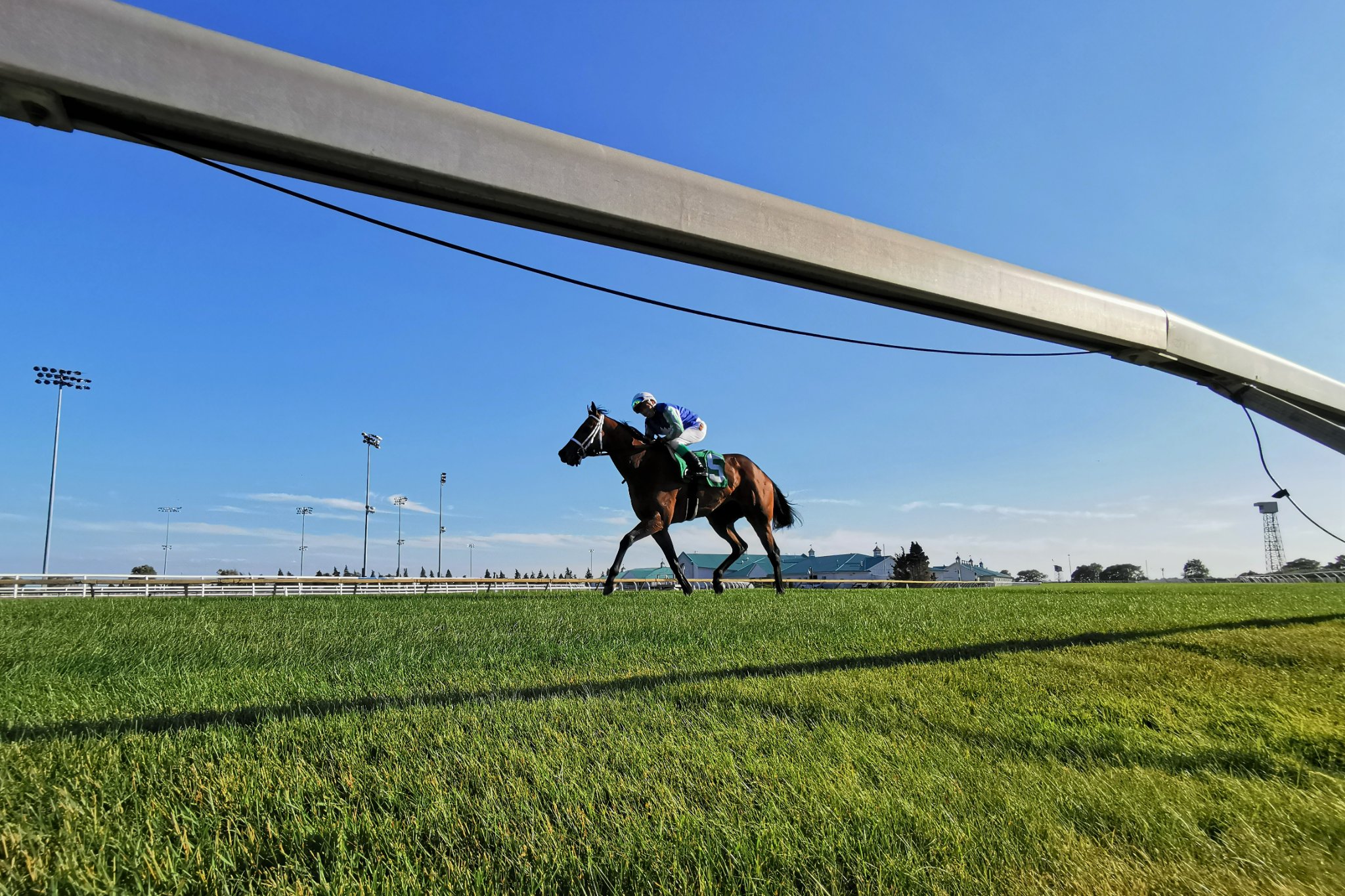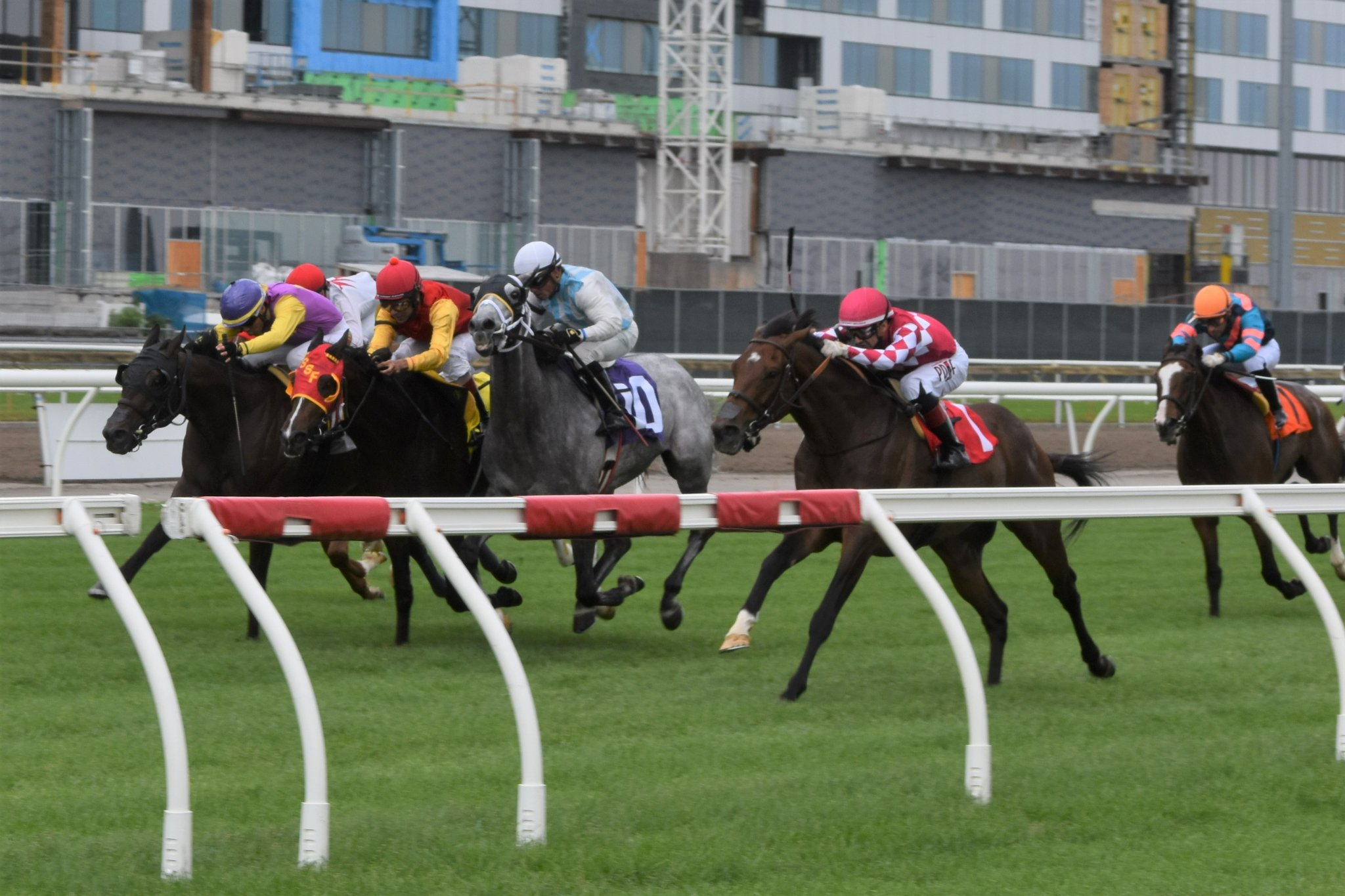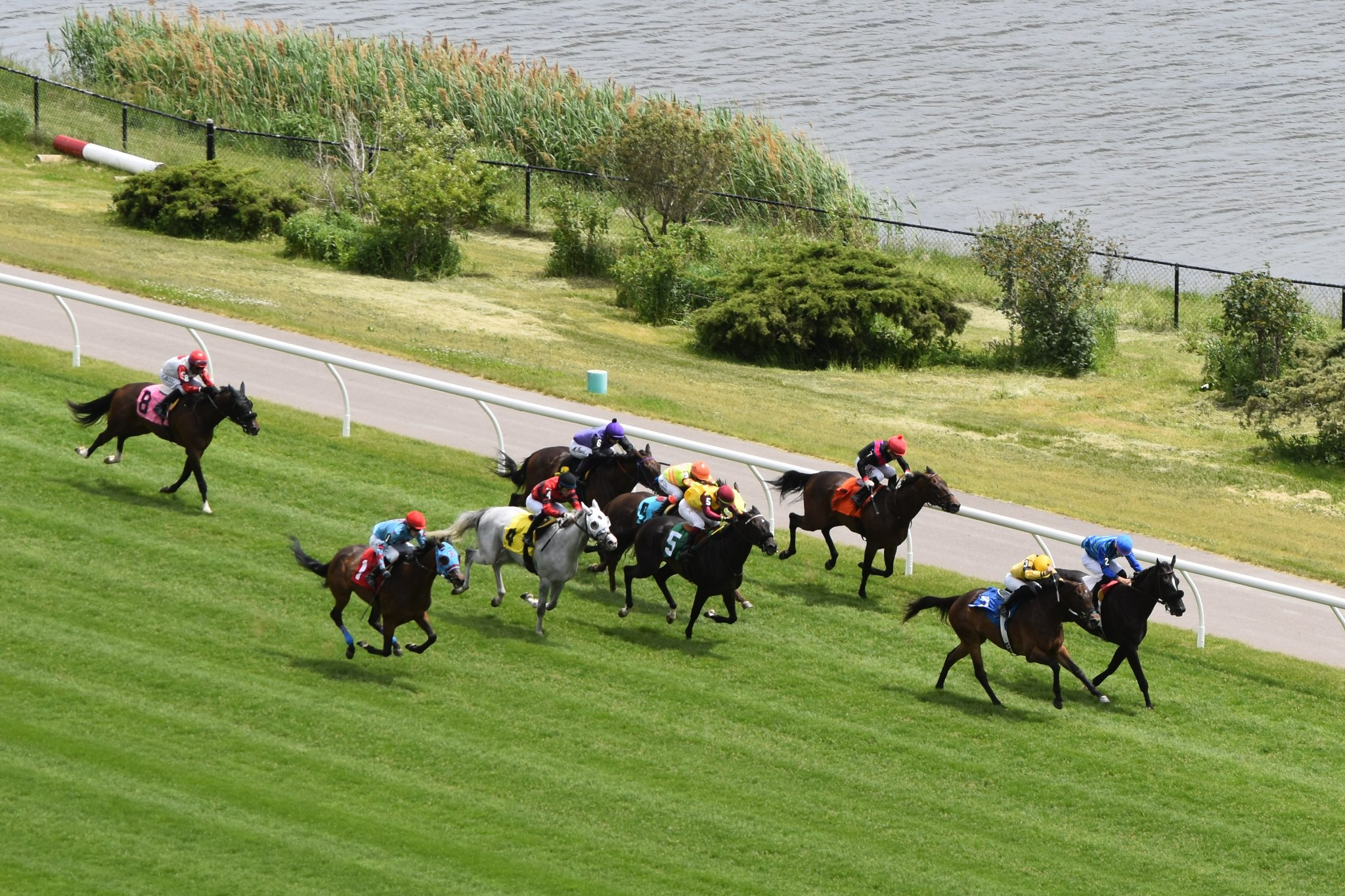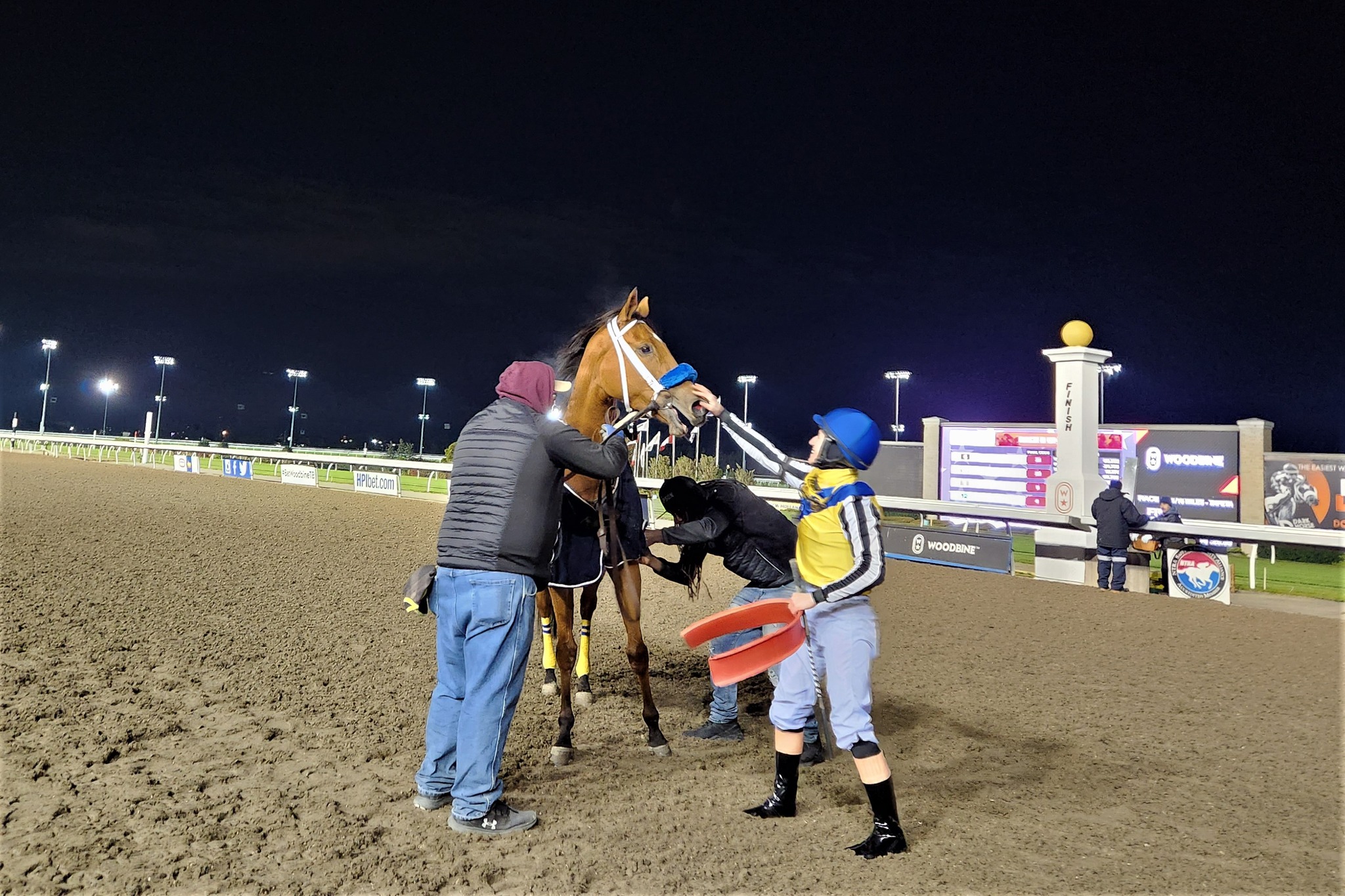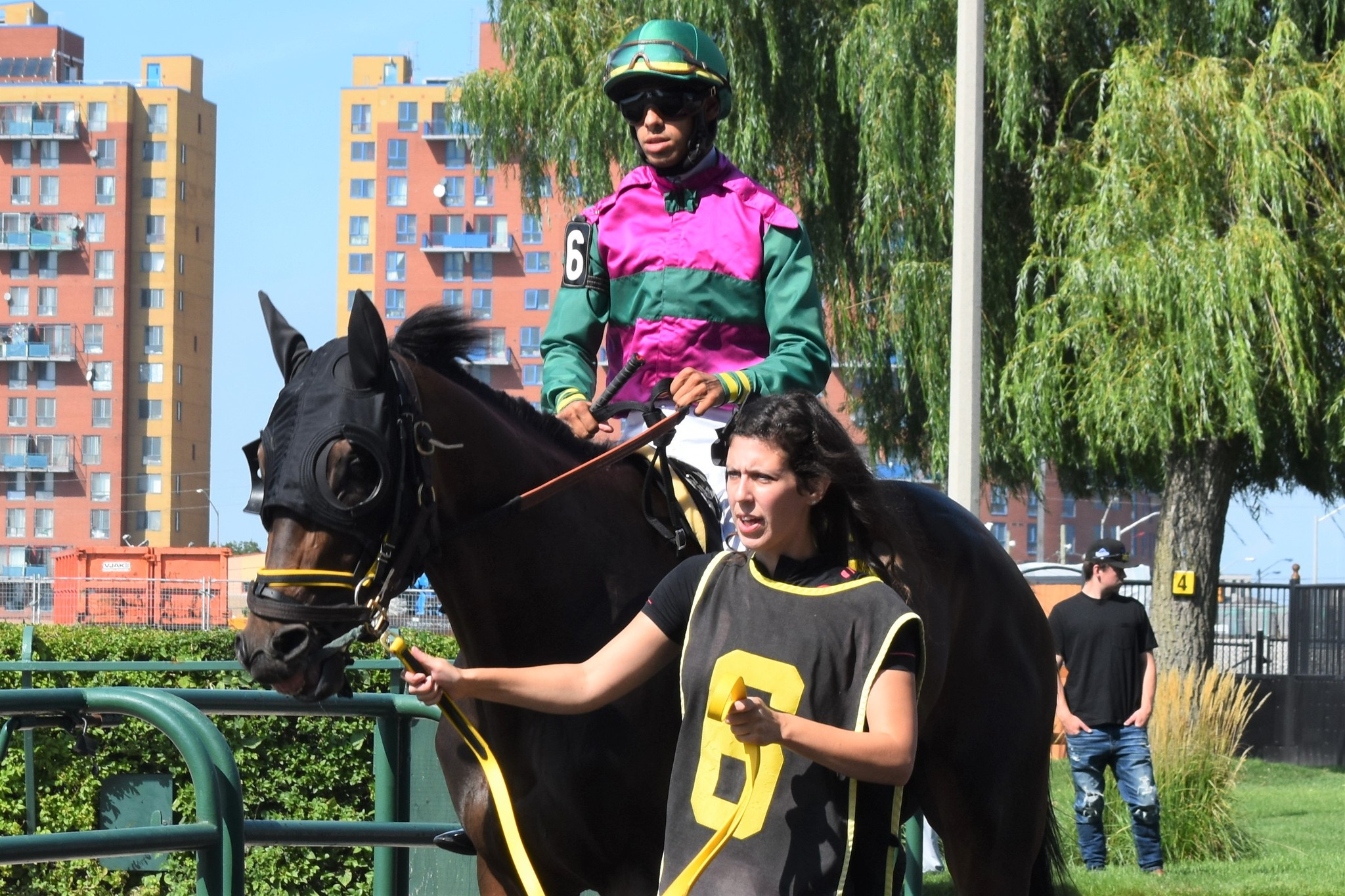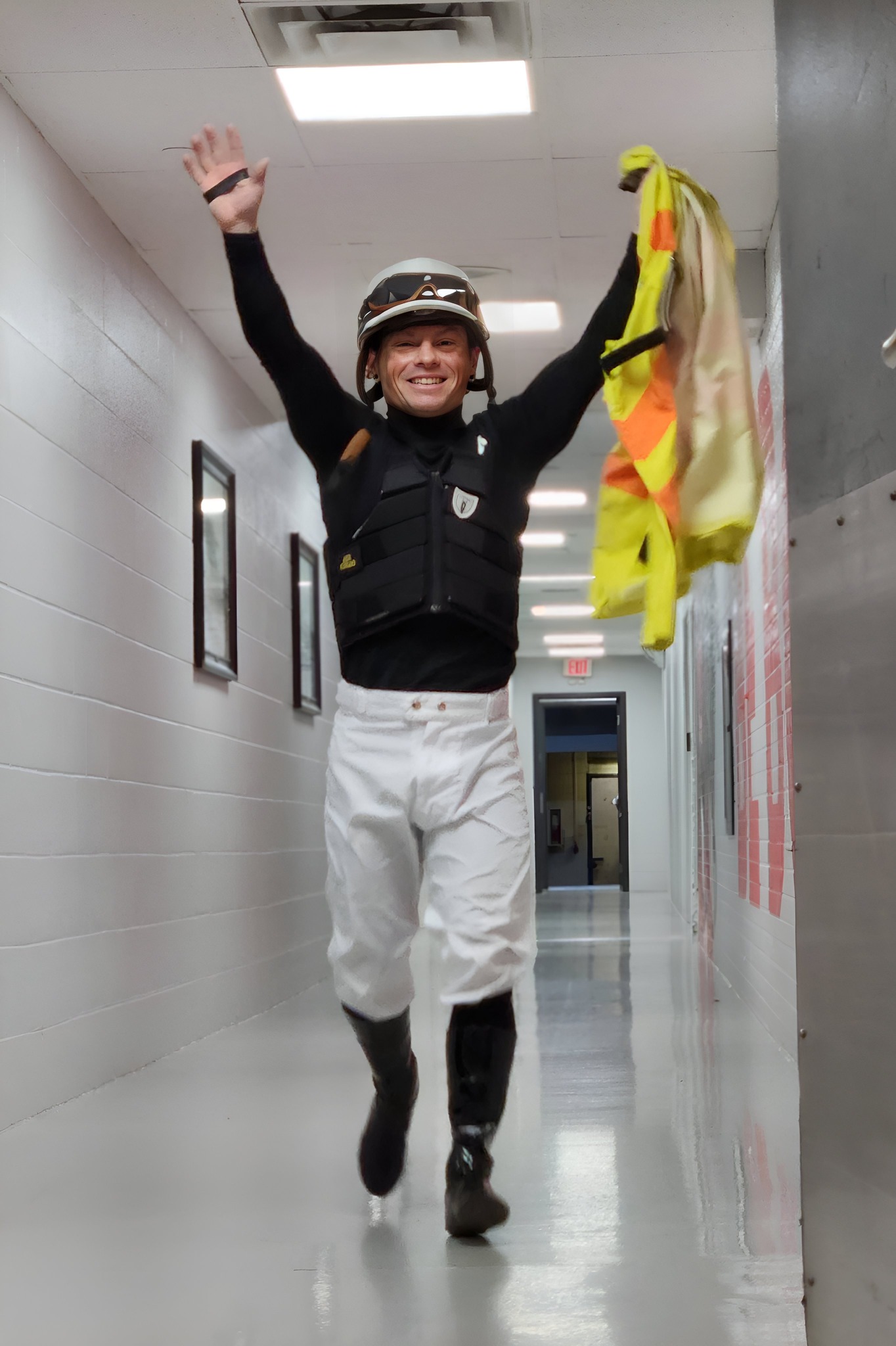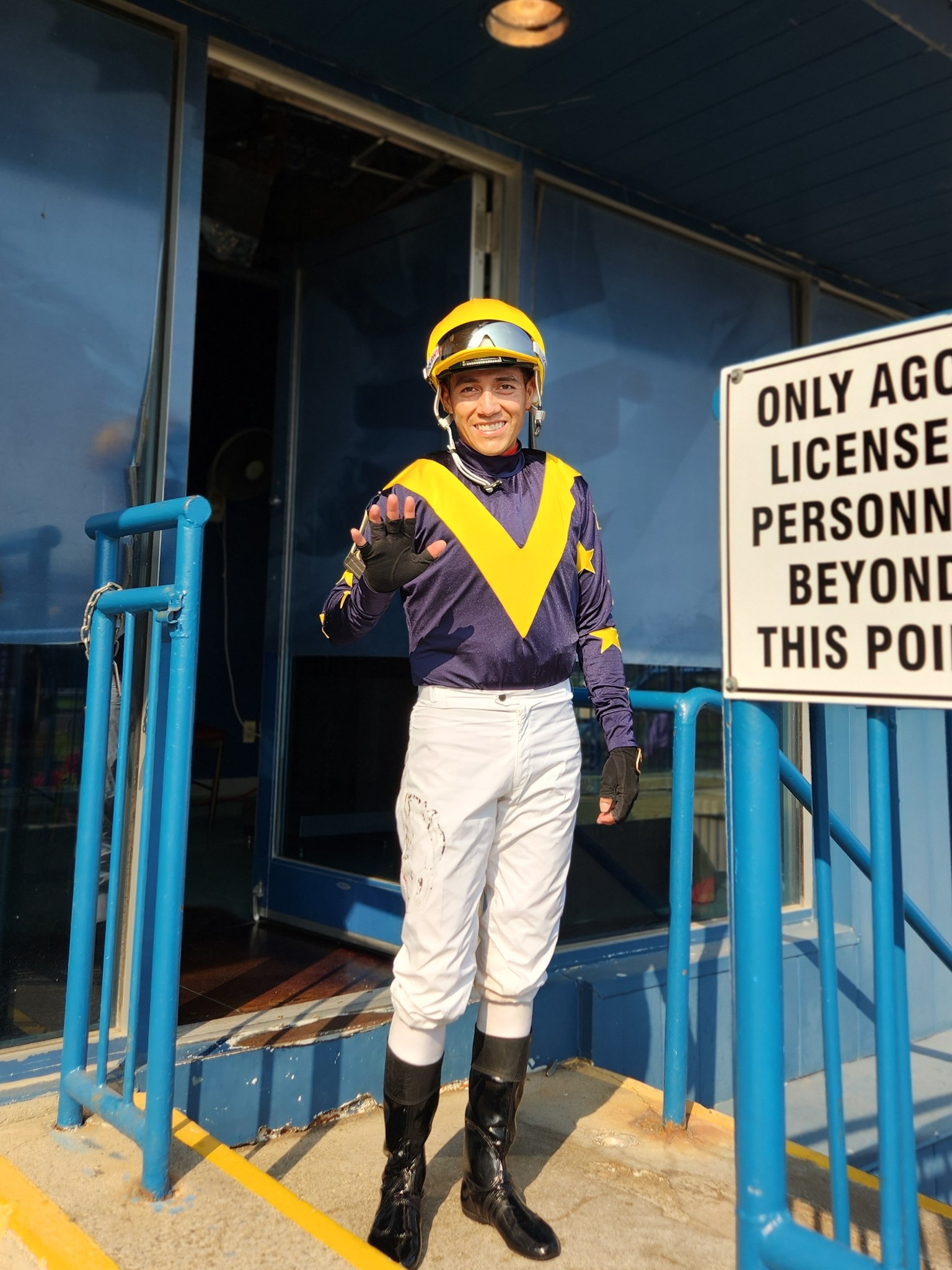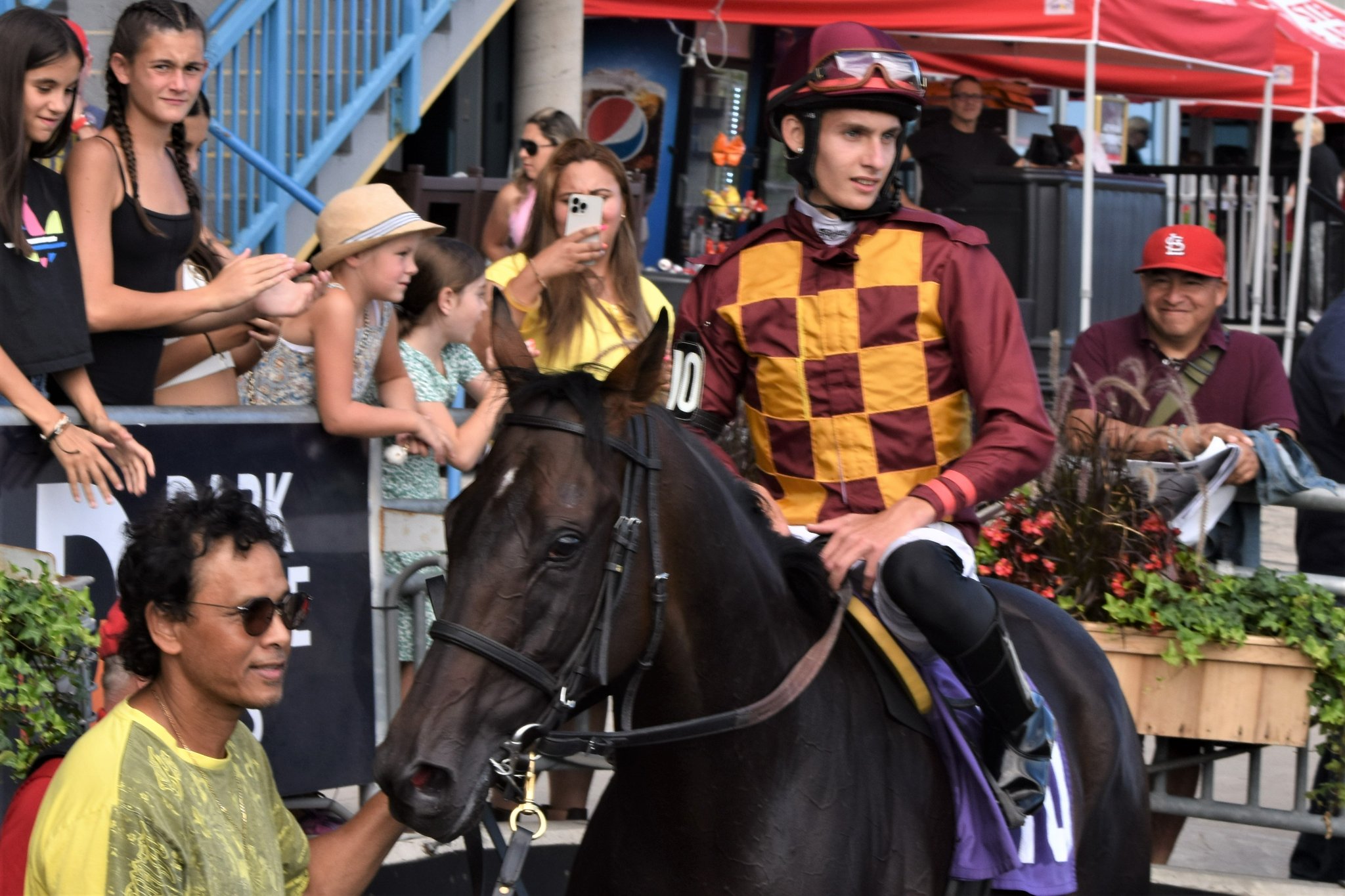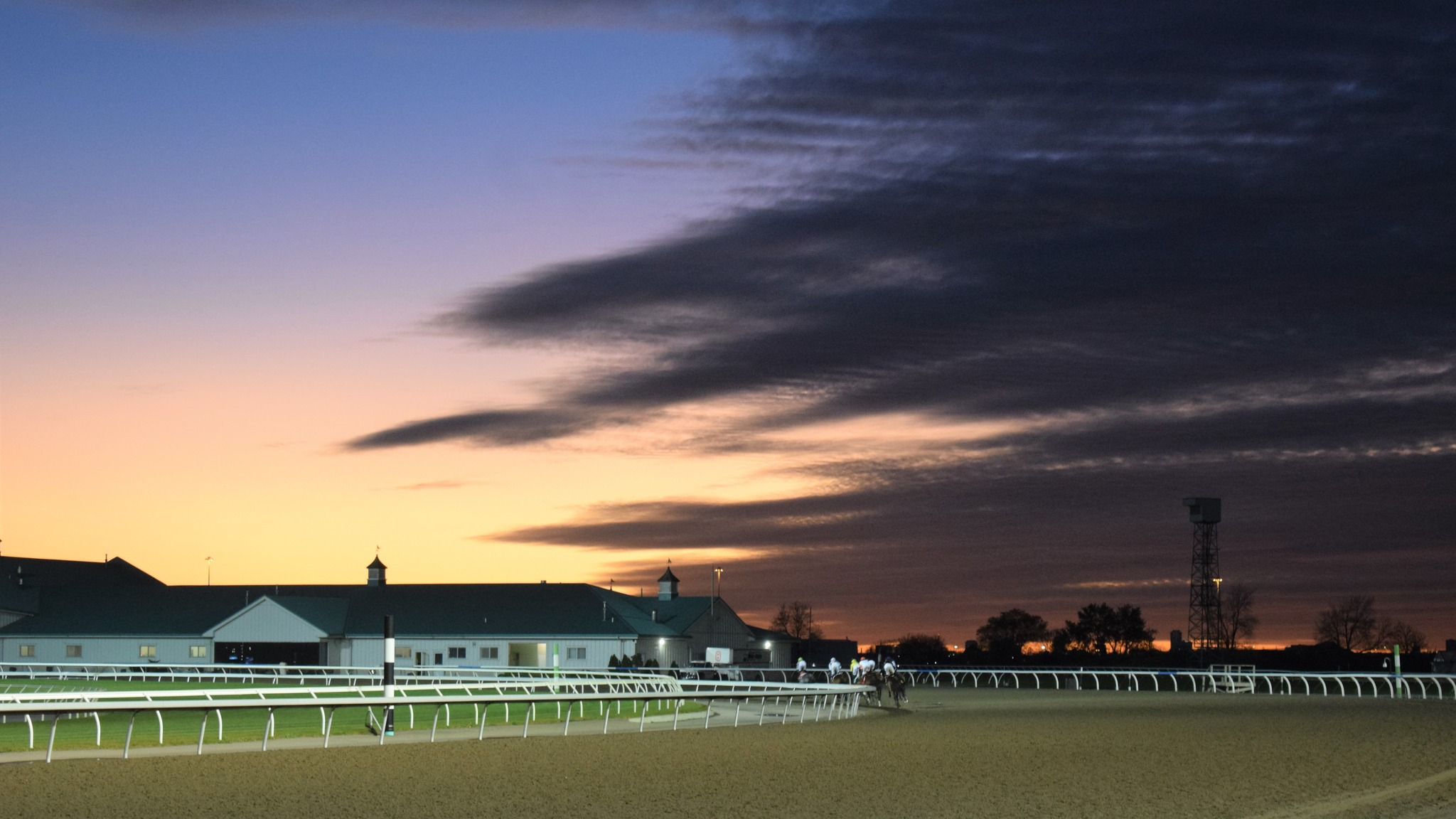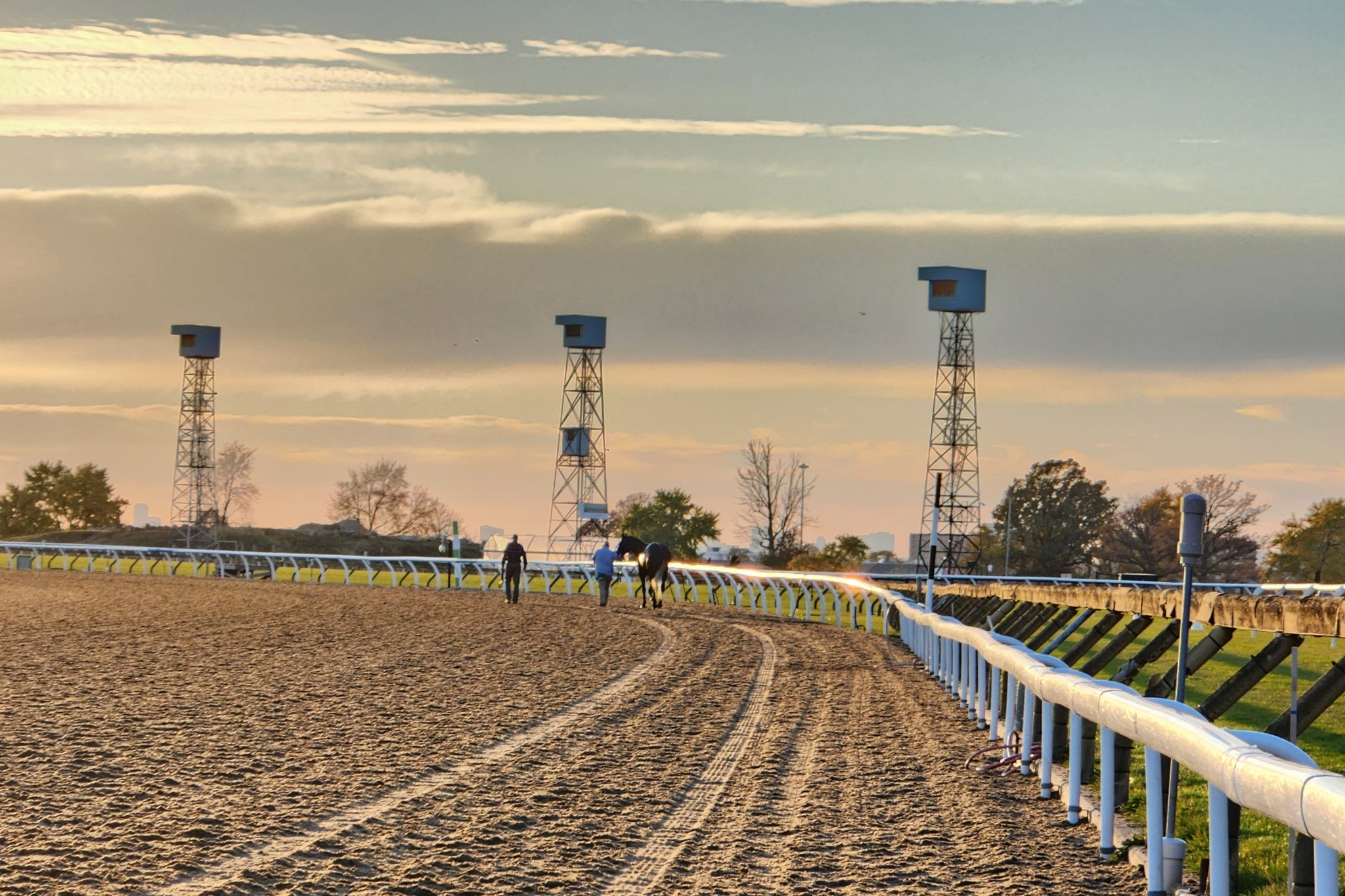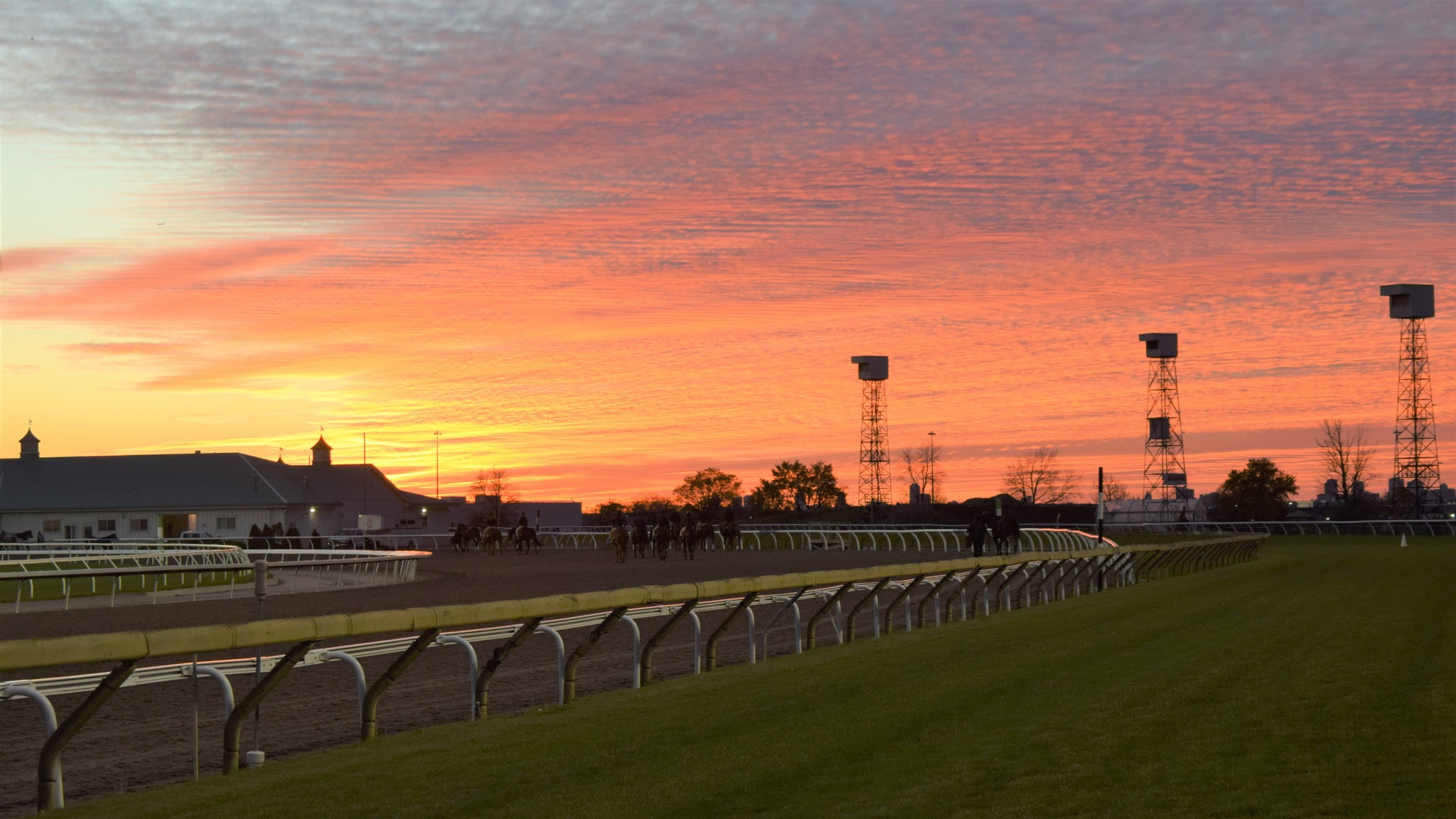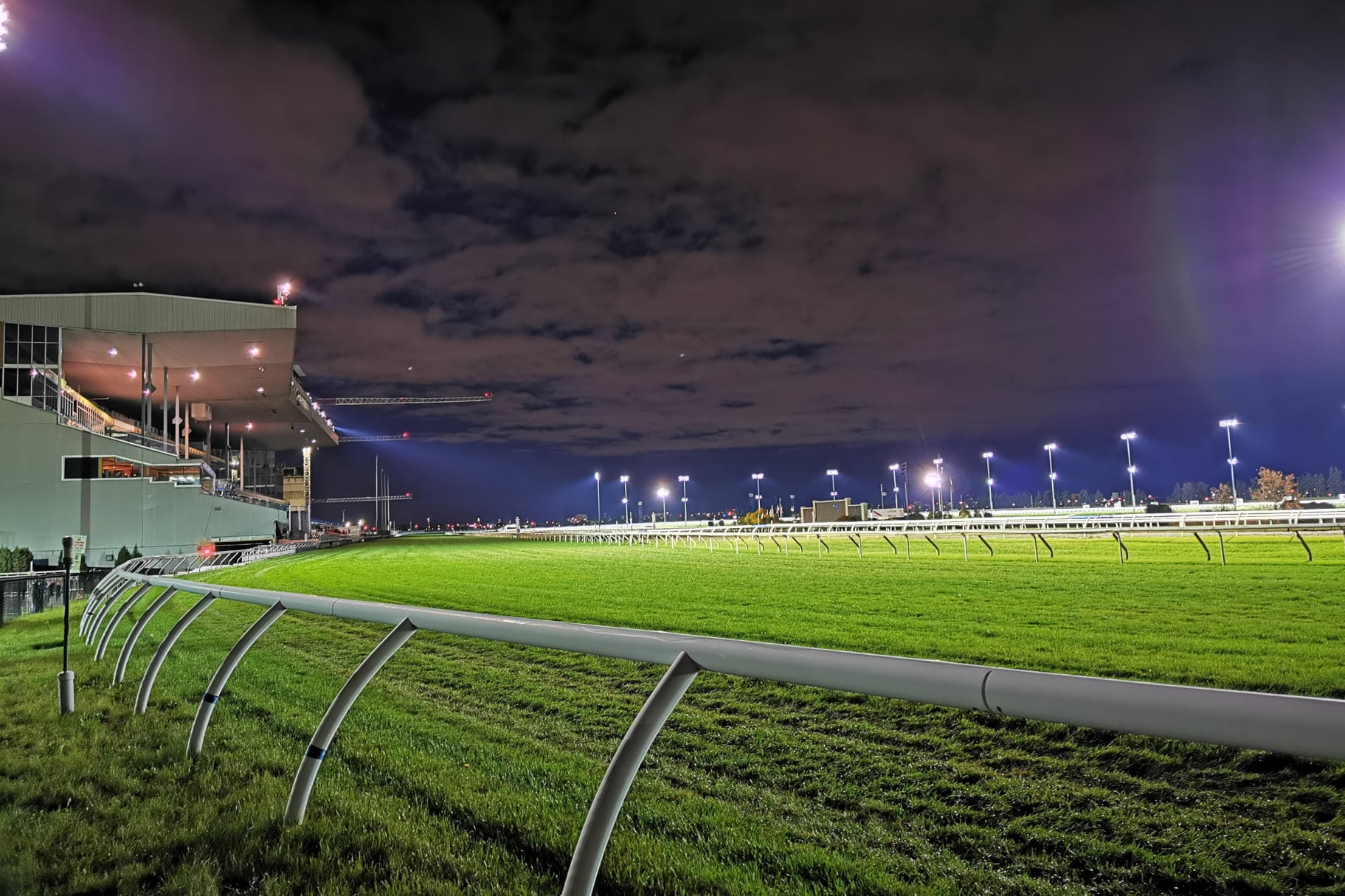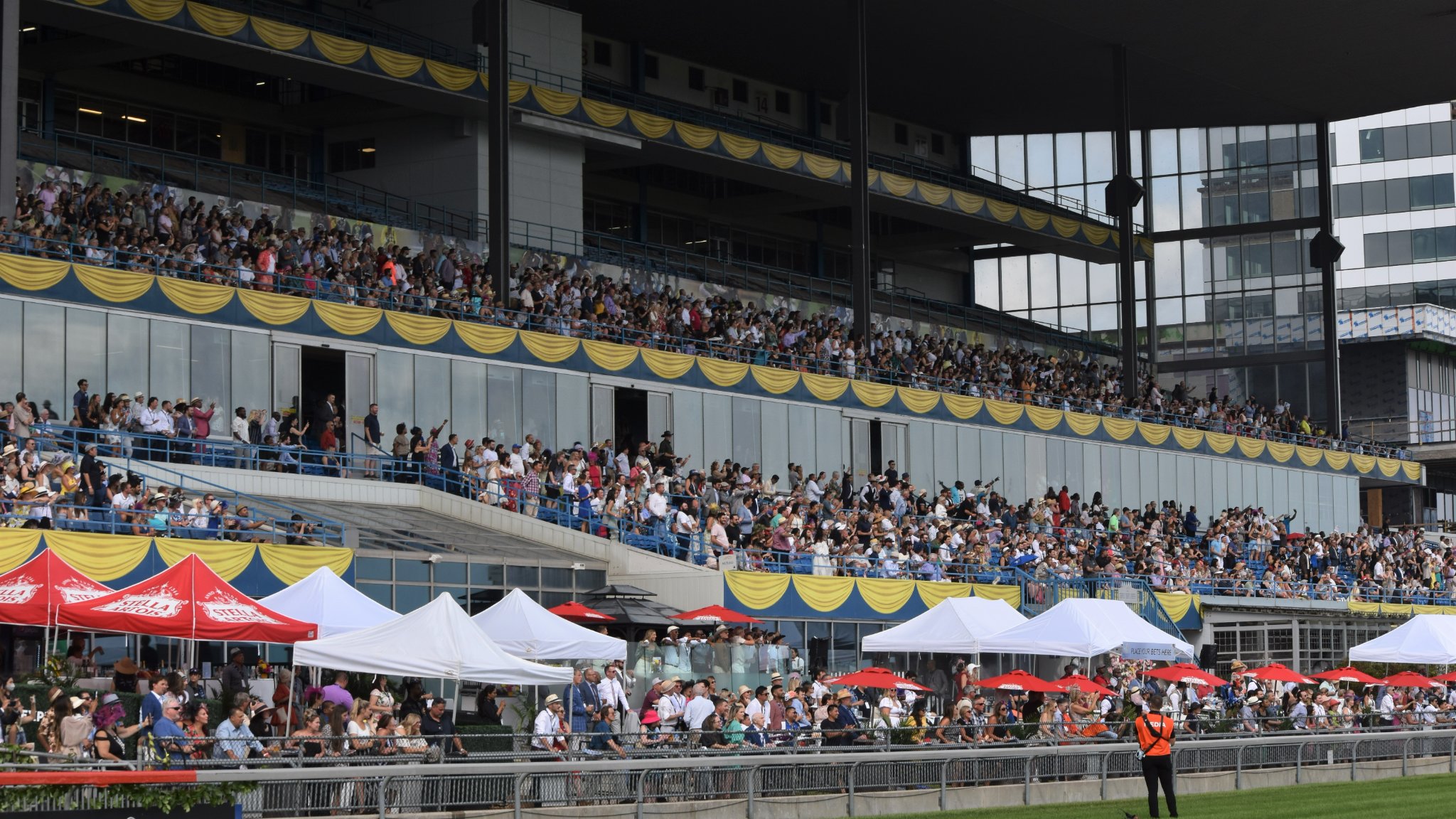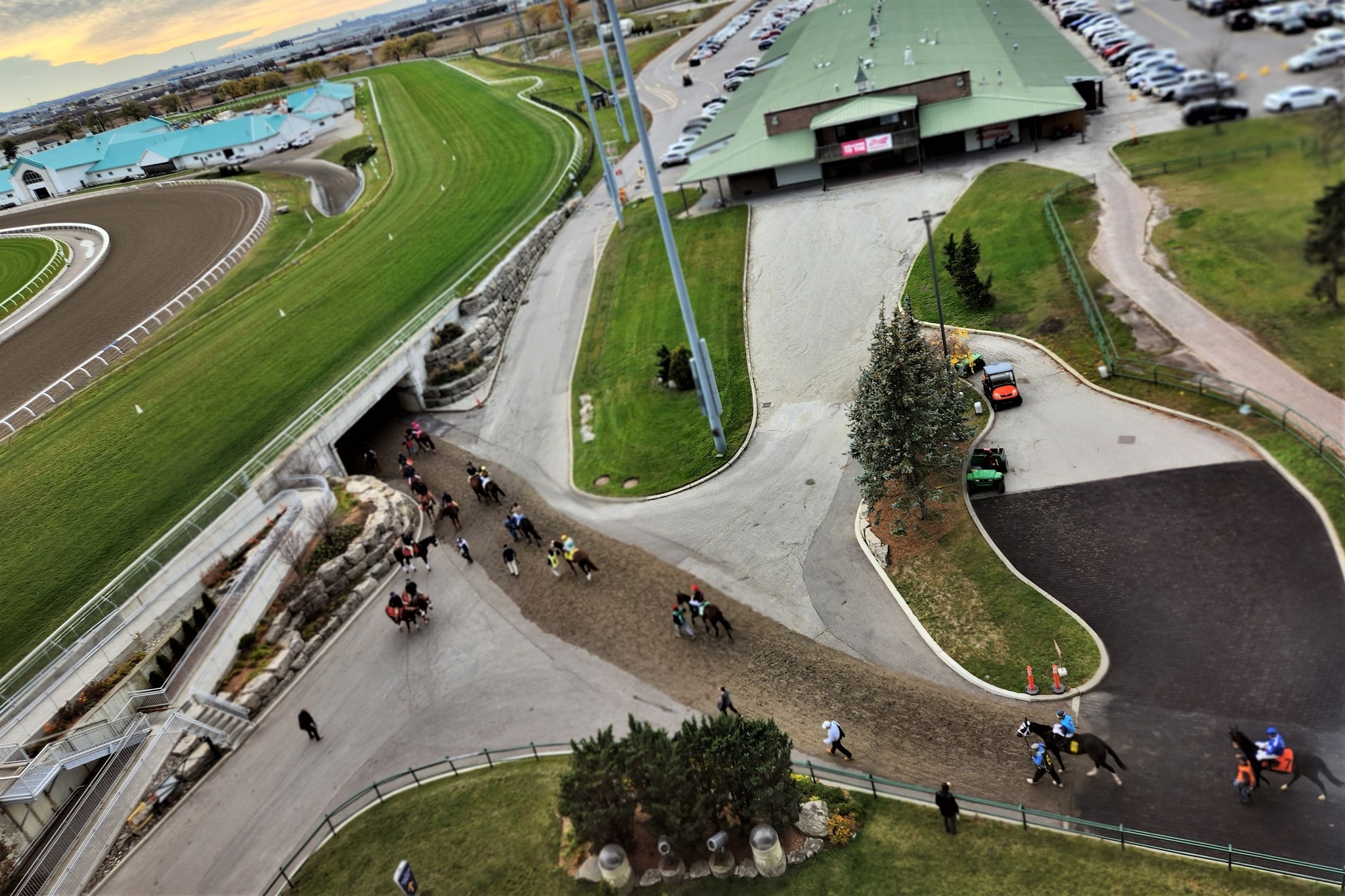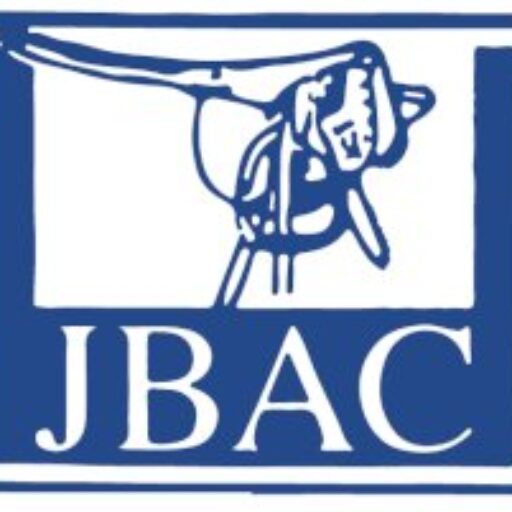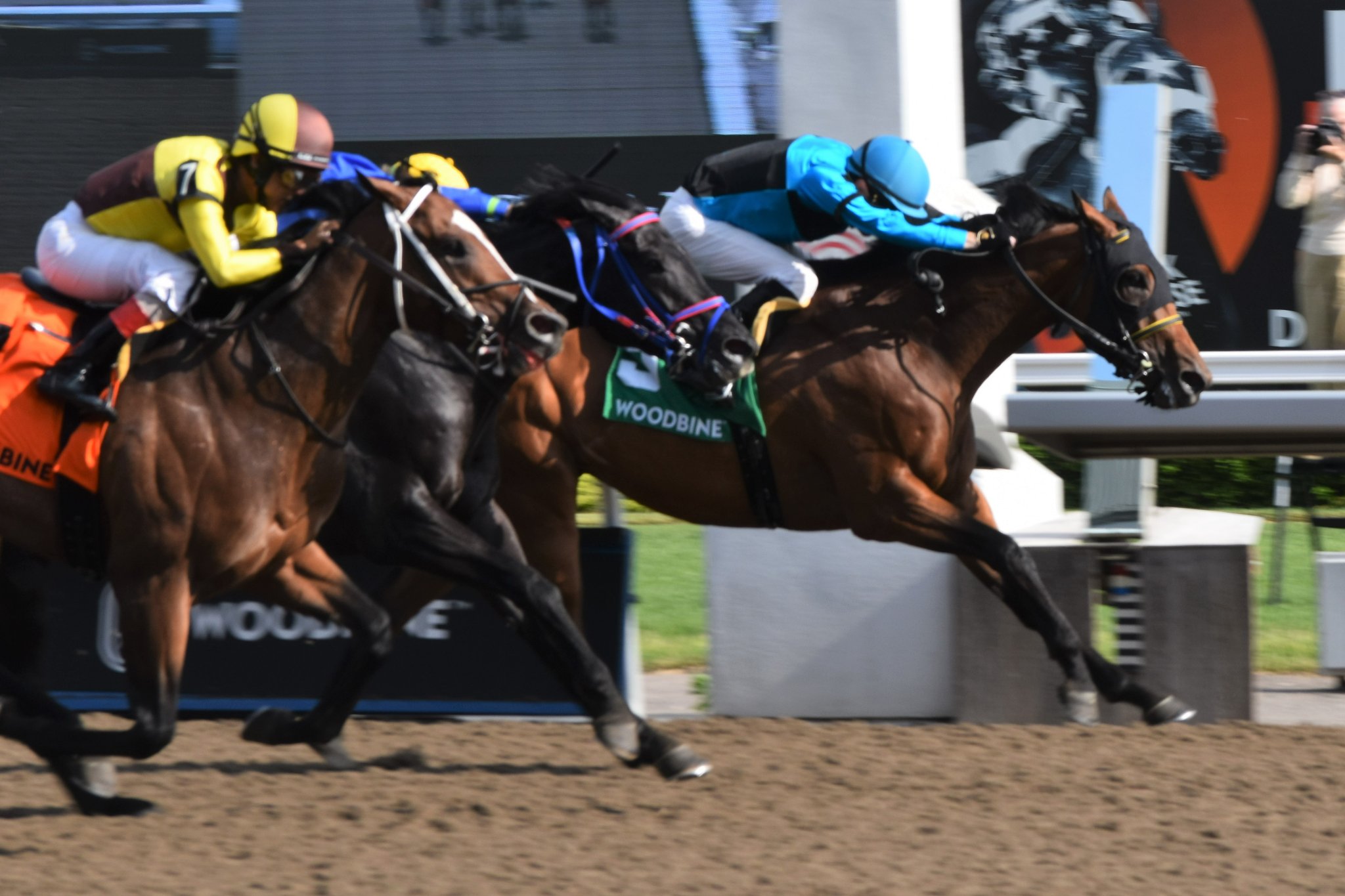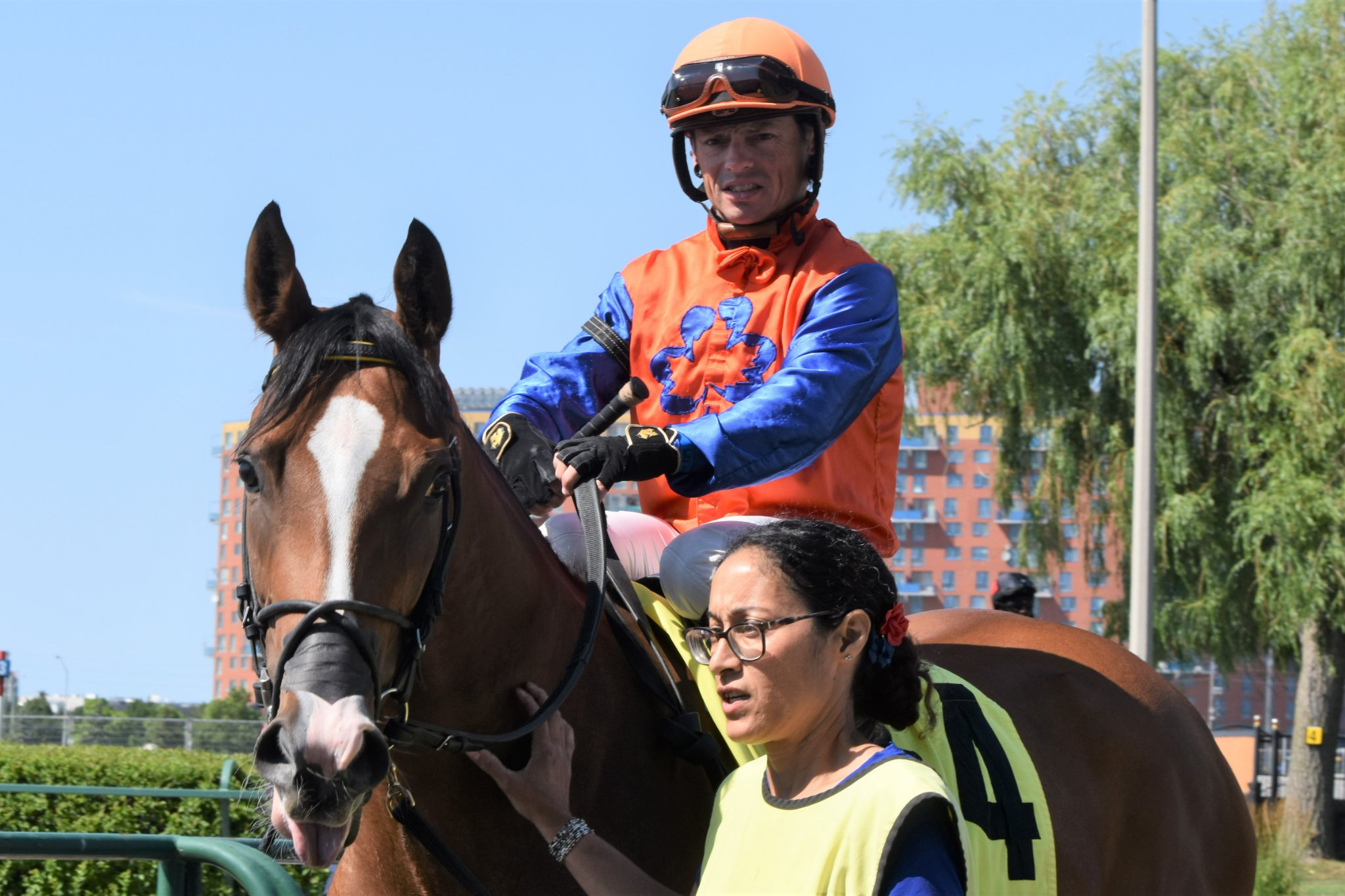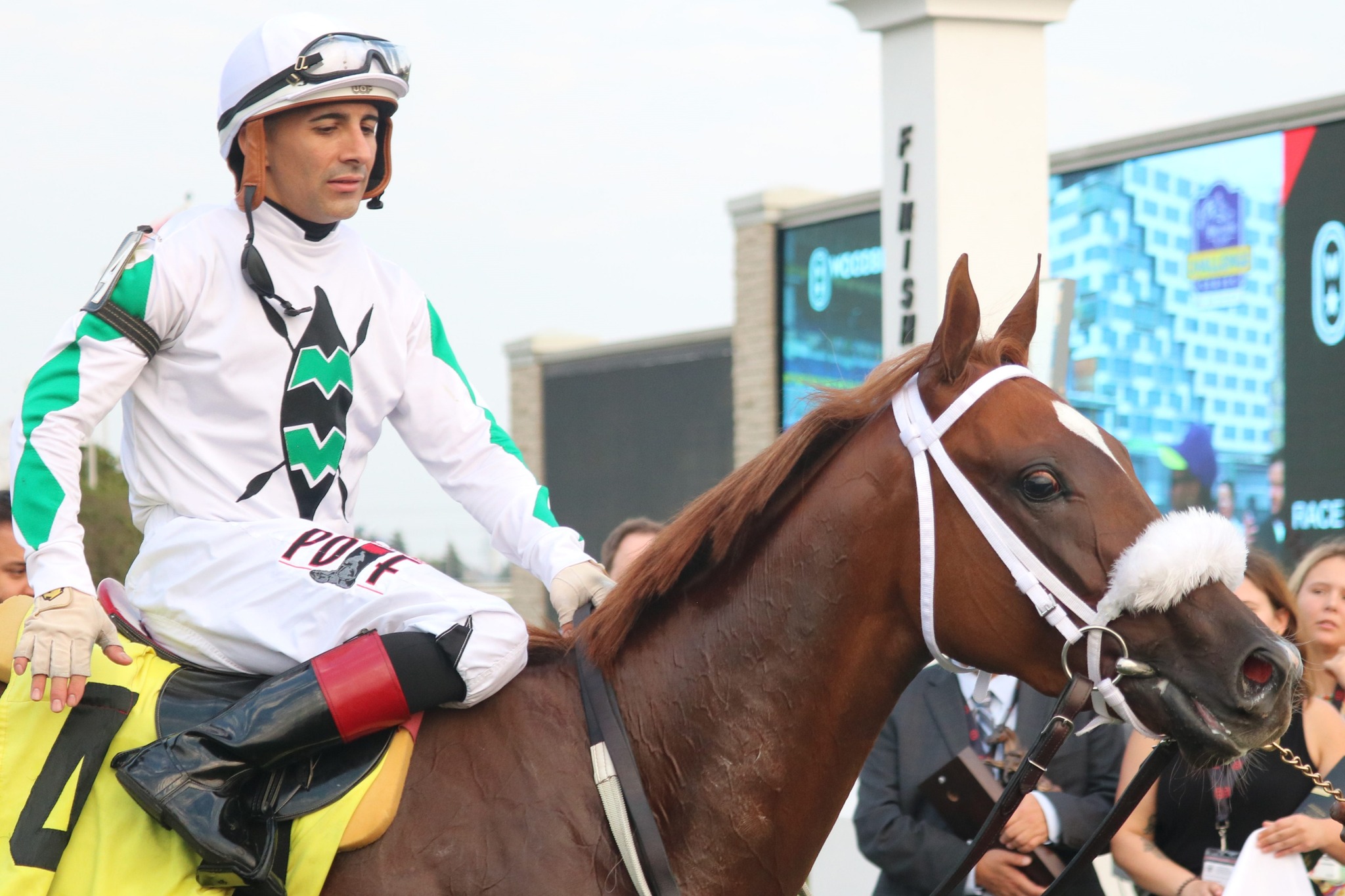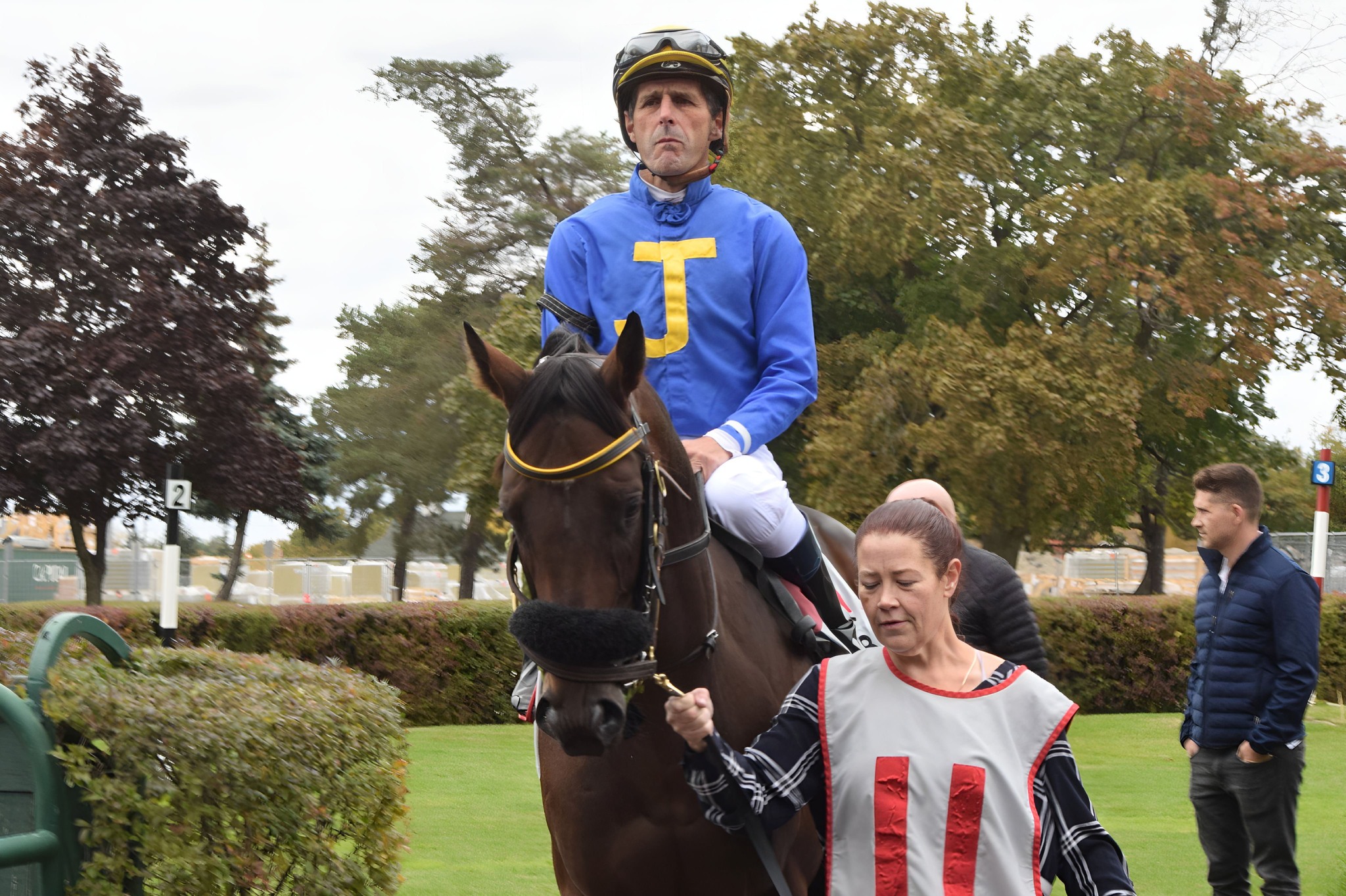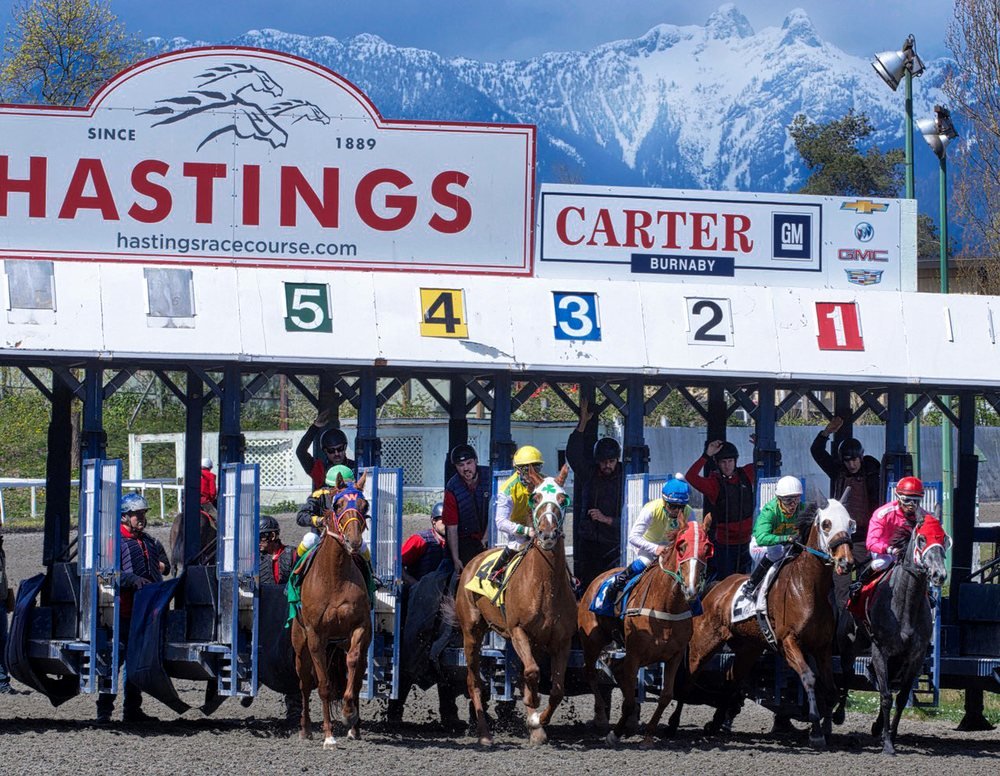Woodbine Racetrack is a race track for Thoroughbred horse racing in the Etobicoke area of Toronto, Ontario, Canada.
Owned by Woodbine Entertainment Group, Woodbine Racetrack manages and hosts Canada’s most famous race, the Queen’s Plate.
The track was opened in 1956 with a one-mile oval dirt track and a seven-eighth turf course.
It has been extensively remodeled since 1993, and since 1994 has had three racecourses.
Views around Woodbine Racetrack
Photos compliments of Mr. Will Wong
History
The original Woodbine Race Course was in 1909. The current Woodbine Racetrack owes its namesake to the actual race course.
The current Woodbine carries the name initially used by a racetrack that operated in southeast Toronto, at Queen Street East and Kingston Road, from 1874 through 1993. (While the Old Woodbine Race Course was at the south end of Woodbine Avenue, the current Woodbine is nowhere near it.)
In 1951, it was operated by the Ontario Jockey Club (OJC) and held the prestigious King’s Plate. Still, it competed with several other racetracks in Ontario and required modernization.
During the 1950s, the OJC, under the leadership of Canadian industrialist and horse breeder E.P. Taylor, began a program of racetrack acquisitions aimed at becoming the biggest and most profitable operator in Ontario horse racing, similar to Taylor’s earlier acquisitions and consolidations in the Canadian brewing industry.
In 1952, the OJC purchased and closed the money-losing Thorncliffe Park, bought and closed the Hamilton Racetrack, and the Fort Erie Racetrack for CA$ 780,000. Renovations began immediately at Fort Erie and Woodbine, financed by a public stock offering for CA$ 2 million.
In 1953, the OJC bought Stamford Park in Belleville. It was closed and redeveloped. In 1955, Taylor purchased the competing Orpen-owned Dufferin Park Racetrack and Long Branch Racetracks for CA$ 4 million ($40.2 million in 2021 dollars).
The Orpen tracks were closed and redeveloped, and the Orpen race charters were transferred to the OJC. The OJC continued the Canadian International and Cup and Saucer stakes races that had been held at the Orpen tracks. The racing charters acquired from the other ways enabled the OJC to run 196 days of racing, more than double its allowed total of 84 days in 1952.
All of the efforts at racetrack acquisitions and closures were designed to support a new “super track.”
In 1952, the OJC identified the new location of the racetrack at Highway 27, east of the Toronto airport, and bought over 400 acres (160 ha). The architect chosen was Earle C. Morgan. Although Morgan had not designed a racetrack, he spent the next two years developing the design in conjunction with Arthur Froelich, who had intended Hollywood Park Racetrack and Garden State Park Racetrack in the United States.
The new track was designed to hold 40,000 spectators and have ample parking, three race courses, and two training tracks. It had stable space for 1,000 horses and rooms for 700 employees. The grandstand, designed to get as many people as close to the finish line as possible, included several restaurants and cafeterias. Construction on the new super track began in 1955.
Grandstand for the new Woodbine Racetrack in 1959
The new racetrack opened on June 12, 1956, and was built at CA$ 13 million ($129 million in 2021 dollars). It was initially known as the New Woodbine Racetrack. It dropped the New in 1963. The old track was converted to a combined thoroughbred and standardbred tracks known after that as Old Woodbine or, for most of its history, as Greenwood Raceway (during standardbred meets) and Greenwood Race Track (during thoroughbred meets).
The two thoroughbred and standardbred meet conducted at Greenwood were transferred to the new Woodbine in 1994, which was, until then, exclusively devoted to thoroughbred racing.
On June 30, 1959, Queen Elizabeth II and the Duke of Edinburgh attended the 100th running of the Queen’s Plate, and Queen Elizabeth II again, on July 4, 2010, participated at the 151st running of the Queen’s Plate Stakes and presented trophies.
The track was the opening venue for the 1976 Summer Paralympics, and some sporting events were held here.
- The Arlington Million was held at Woodbine in 1988.
- The Breeders’ Cup was held at Woodbine in 1996.
- The Woodbine facility is also home to the Canadian Horse Racing Hall of Fame.
- In 2018, the track began using a GPS-based timing system.
In 2022, Woodbine announced plans to add an 8,000-seat soccer-specific stadium and adjoining training facilities in the northeast corner of the property; this would be the presumed new home of York United FC and possibly house a future professional women’s soccer club.
Physical attributes
The E.P. Taylor turf course is an irregularly shaped racecourse. The outermost E. P. Taylor turf course for thoroughbreds, completed in 1994, is 1.5 miles (2.4 km) long with a chute allowing races of 1.125 miles (1.811 km) to be run around one turn.
It is irregularly shaped, the clubhouse turn departing from the traditional North American oval, and the backstretch is from 2.5 feet (76 cm) to 3 feet (91 cm) higher than the homestretch.
The Taylor turf course and the main dirt course at Belmont Park on New York’s Long Island are the only mile-and-a-half layouts in North American thoroughbred racing. In 2016, Woodbine will contest up to 40 turf races running clockwise (right-hand turns) in what is being billed as “EuroTurf” races.
Inside the Taylor is the 1 mile (1.6 km) synthetic course for Thoroughbreds.
Since April 9, 2016, the surface has been Tapeta; it was Polytrack from August 31, 2006, through 2015, and a natural dirt surface before that. Two chutes facilitate races at seven furlongs [.875 miles (1.408 km)] and 1.25 miles (2.01 km).
The innermost oval was originally a 7/8-mile [.875 miles (1.408 km)] grass oval until the E. P. Taylor turf course opened in 1994. It was then converted to a crushed limestone dirt course and was used for harness racing until April 2018.
It was then converted back to a second turf course for the 2019 thoroughbred racing season. The first race on the new Inner Turf was run on June 28, 2019, and was won by Bold Rally with Eurico Rosa da Silva aboard.
Portions of the current E. P. Taylor’s turf course (the backstretch and far turn) originally formed part of a long turf chute that crossed over the dirt course to the inner turf oval at the top of the stretch. This was used for several major races, including Secretariat’s final race in the 1973 Canadian International, until the entire E. P. Taylor’s course was completed in 1994.
Casino
Casino Woodbine opened in 1999, offering a slots parlor, and later expanded to table games in 2018. It contains 100+ table games, 3,500+ slot machines, 220+ electronic table games, and 100+ dealer-assist stadium gaming. Table games include blackjack, roulette, and baccarat. It is open 24 hours a day.
In 2019, construction began to expand the casino to include an art venue.
Horse racing
Standardbred races
Woodbine has been a regular host for the Breeders Crown. Since the event changed to a one-night format in 2010, the facility has hosted three times—2011, 2012, and 2015.
Woodbine was also the host of the CA$1,500,000 North America Cup for three-year-old pacing colts and geldings from 1994–2006. That race, along with the Elegant Image Stakes for three-year-old filly trotters and the Good Times Stakes for three-year-old colt and gelding trotters, has been moved to Woodbine’s sister track, Woodbine Mohawk Park.
Starting in 2018, all standardbred racing has been moved to Woodbine Mohawk, as the 7/8 standardbred track is being converted into a 2nd turf course.
Thoroughbred races
The record for most wins by a jockey on a single race day at Woodbine is seven, set by Richard Grubb on May 16, 1967, and twice equaled by the legendary Canadian jockey Sandy Hawley, first on May 22, 1972, and then again on October 10, 1974.
